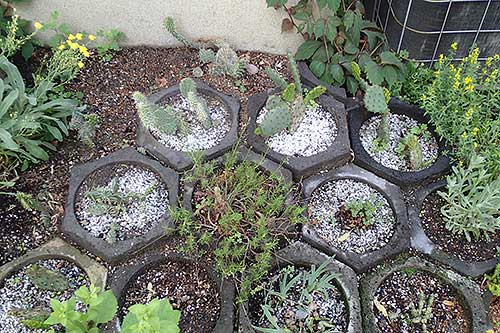

Although there is a wide range of growing media used by successful growers, I'm increasingly having best success with pure granular Turface (bonsai people know it as Akadama) combined with feet on my pots for ventilation through the bottom hole. When bottom watering, it soaks up liquid quickly to the depth of water provided then stops, so watering and draining are both quick and precise. It keeps air movement and drainage wet or dry because it doesn't swell when wet.
My indoor temperature is normally 21C, humidity 50% summer, 30% winter. Sun level is moderately low (north and north-west windows) so is supplemented by wide-spectrum LED lamps on timers.
Outside, I've half a dozen blooming Sedum; Opuntias basilaris var.aurea, 'Crystal Tide', humifusa, phaeacantha and Xcolumbiana have each survived a winter and a year of squirrel predation, but none have bloomed yet.

| Acanthocereus tetragonus originated from Central America. 'Fairy Castle' is a "miniature" cultivar (it can still reach 2 m height) with many curved branches. Sadly, the chlorophyl of two of these has died leaving them colourless; plants were firm and roots looking good until the end. |
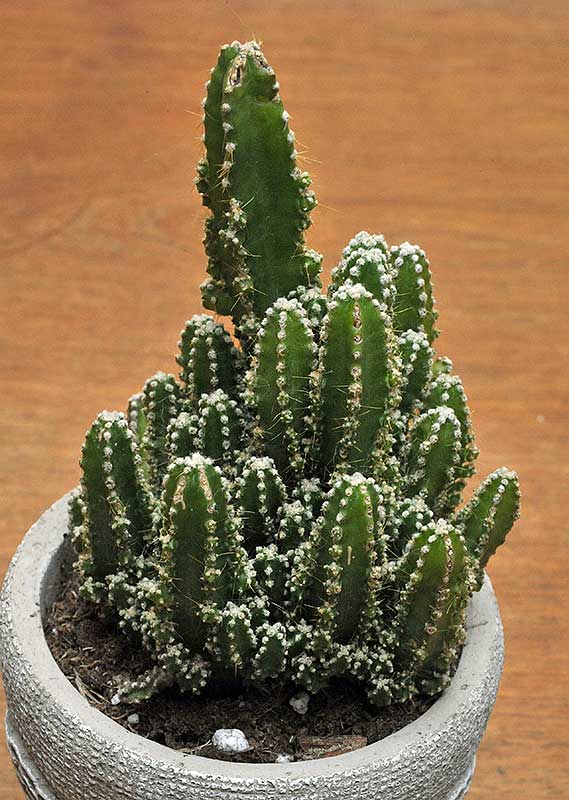

| ||
| Adenium obesum is a caudiciform plant from south of the Sahara desert in Africa. Its sap contains cardiac glycosides used as arrow poison for hunting large game throughout much of Africa and as a fish toxin. |
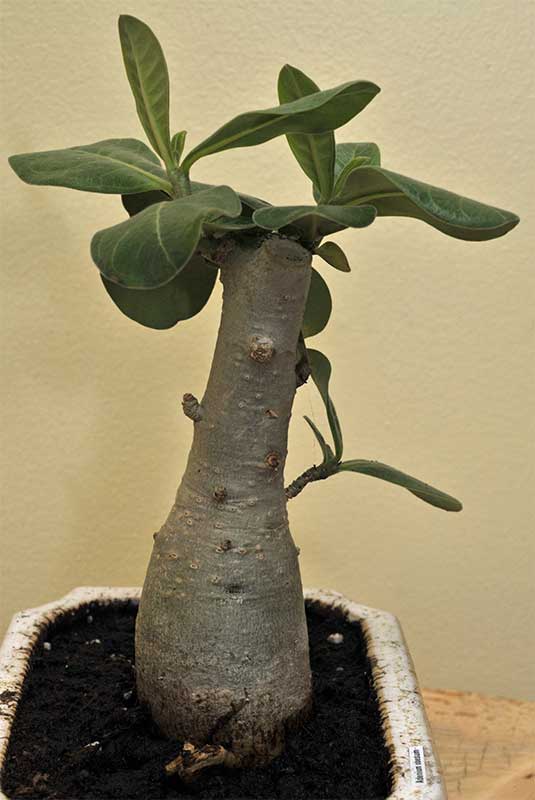

| ||
| Adromischus cristatus is endemic to the eastern cape of South Africa. |
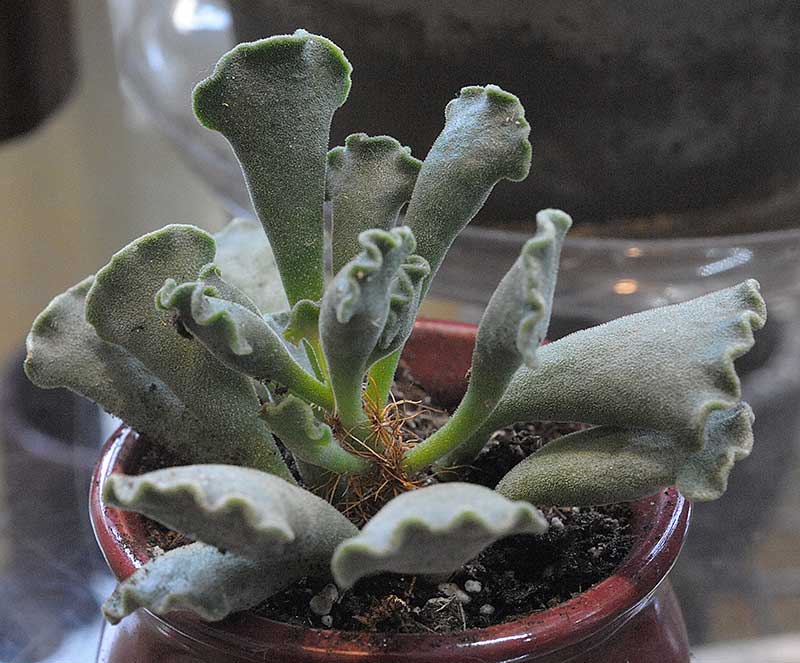

|
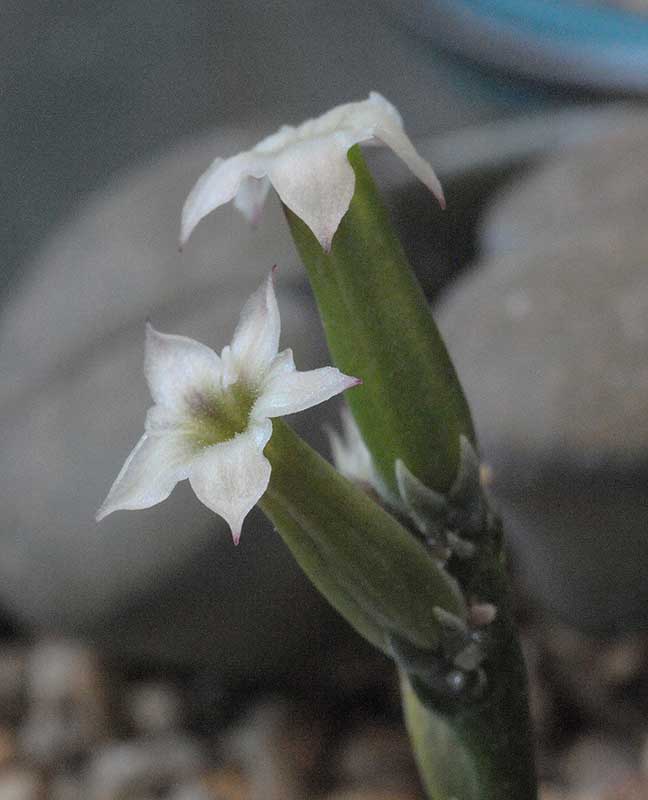

| |
| Aechmea fasciata is a bromeliad from south-east Brazil that can grow to 40 cm in diameter. It won't fit on my shelf by then :( |
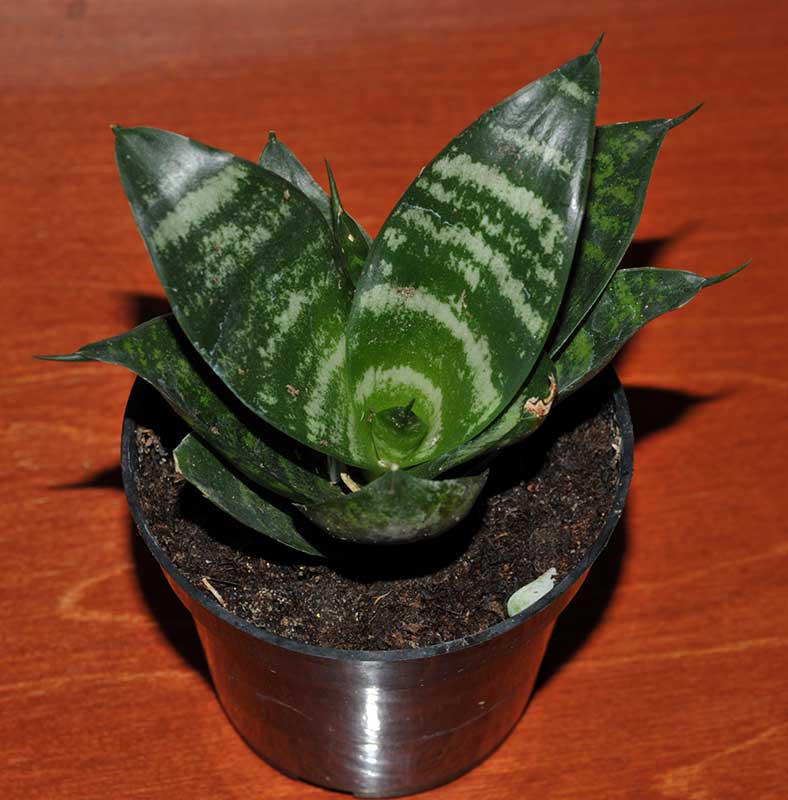

| ||
| Agave flexiflora is native to Arizona. As with all Agave, it dies after blooming but is supposed to grow for 100 years first. Let's hope! |
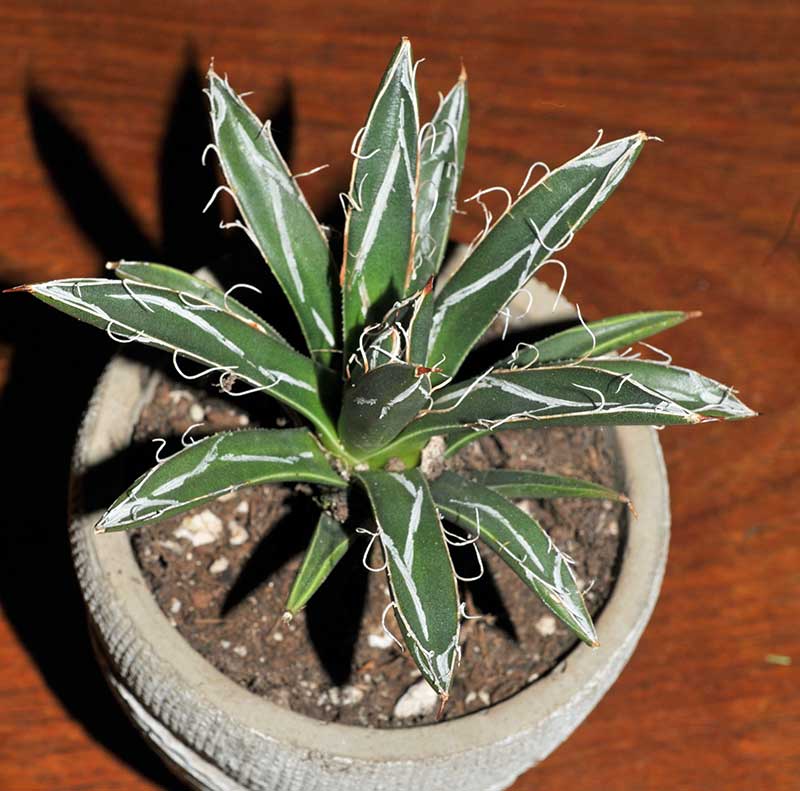

| ||
| Aloe 'Minnie Belle' is probably a selection of A.juvenna. If it is, it's native to Kenya. |


| ||
| Anacampseros filamentosa is native to the Karoo region of South Africa. It's leaves wiggle like Jello! |
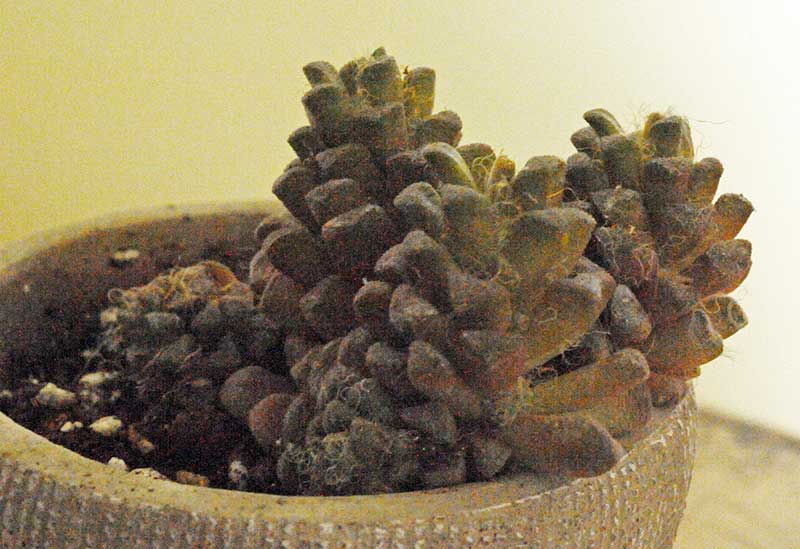

| ||
| Anacampseros rufescens is native to western South Africa; although this one looks dehydrated compared to most of its genus, it's growing well. |
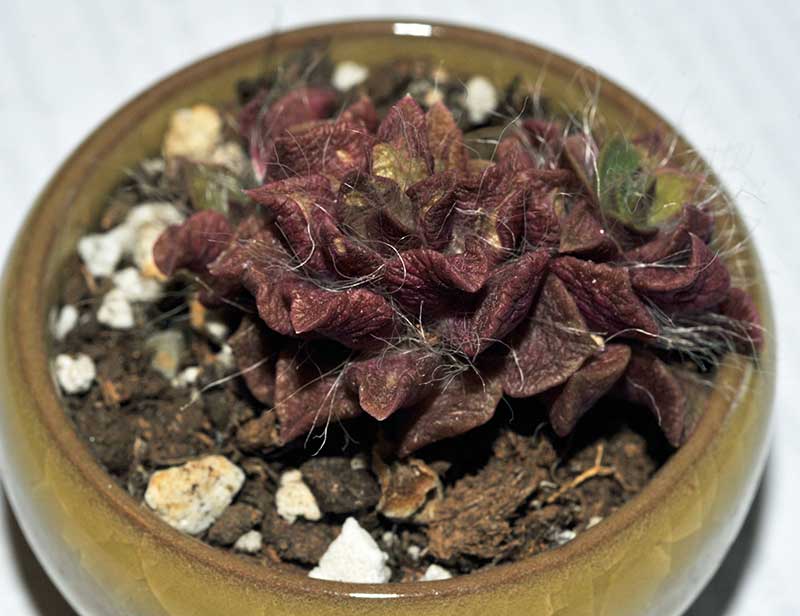

| ||
| Anacampseros telephiastrum is also native to western South Africa. |
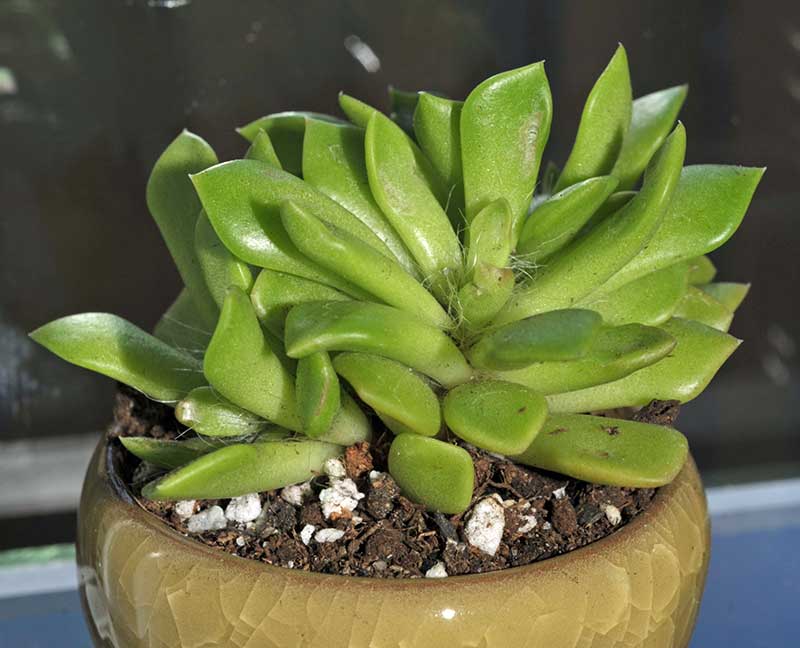

| ||
| Aeonium arboreum is native to the Mediterranean region; this is the 'Zwartkop' selection. |
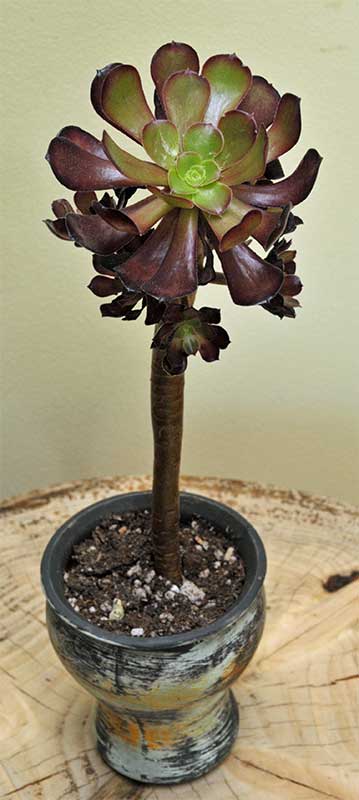

| ||
| Austrocylindropuntia subulata is from the Peruvian Andes where it grows to 4 m height; it's used for fencing throughout South America. I'll have to find a larger home for it long before then! |


| ||
| Beaucarnea recurvata is native to eastern Mexico. It's slow growing but can reach 4 m with time and good light. |
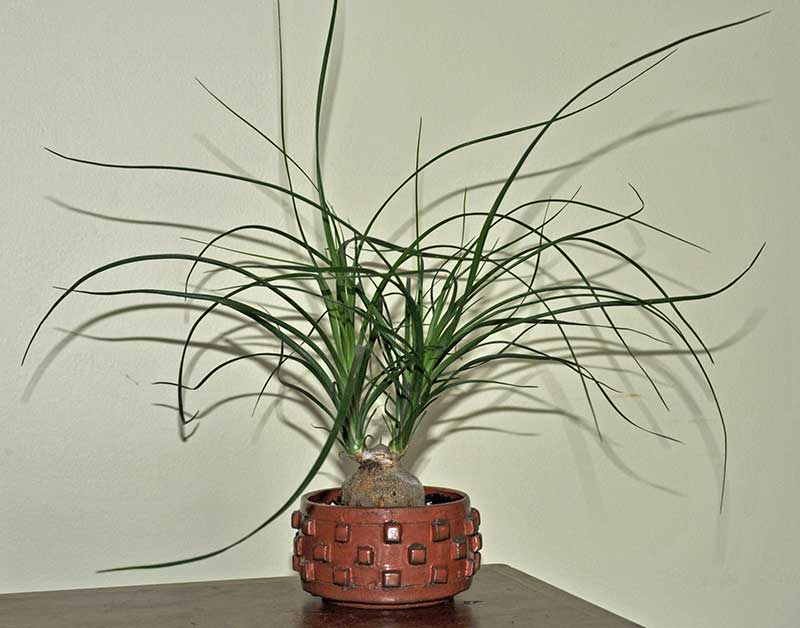

| ||
| Bowiea volubilis is native to areas of South Africa where soil is poor, moisture is minimal and heat is severe. |
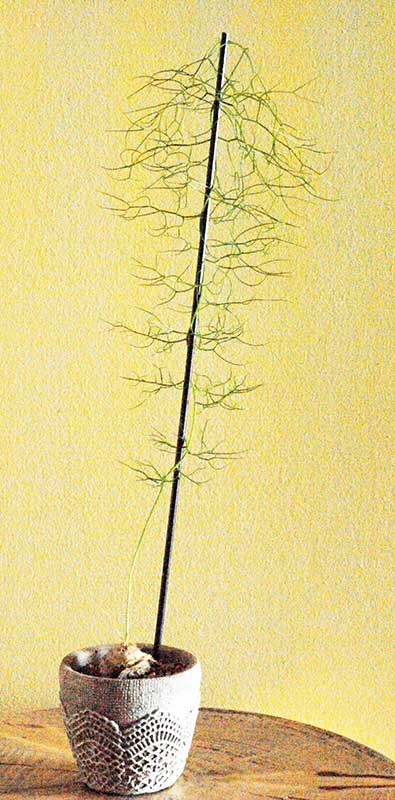

| ||
| Brasiliopuntia braziliensis eventually grows a slender erect trunk up to 8 m tall lined with flat segments. I won't have room for it by then! |


| ||
| Cephalocereus senilis is native to eastern Mexico; the wool is used there for sweaters. It has central spines, but they are very short and hidden by the radial "wool". It needs very sharp drainage to avoid rot. |


| ||
| Cereus peruvianus, the Peruvian apple cactus, has edible fruit when full size (up to 10 m tall). This is the monstrose form, which instead of growing from a single areole per branch, grows from random points to produce a plant that's asymmetrical and covered in knobby bumps. Hopefully it won't grow as tall as normal form. |


| ||
| Cotyledon orbiculata undulata is a selection of a South African species. The white surface is a waxy layer that helps to protect the leaves from excess light. However, it also prevents the leaves from absorbing water directly, so is a climate-dependent tradeoff. |


| ||
| Crassula argentia 'Coral' is from southern Africa; many consider it a synonym for C.ovata. |


| ||
| Crassula 'Buddha's Temple' is C.pyramidalis X C.perfoliata. |
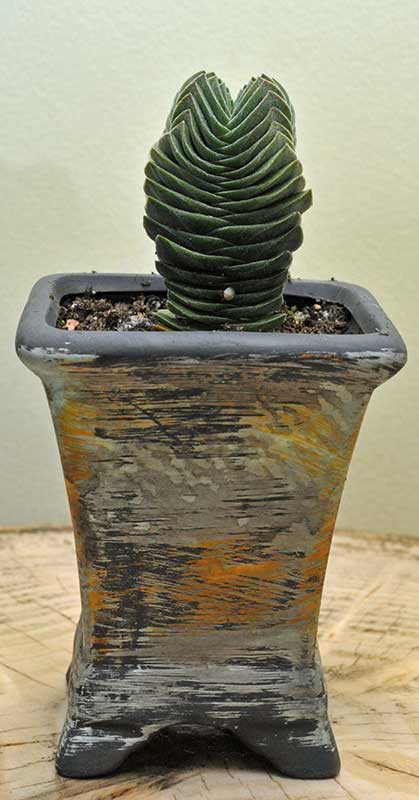

| ||
| Crassula marnieriana 'Hottentot' is from southern Africa; it's easy to multiply by cuttings. |


|
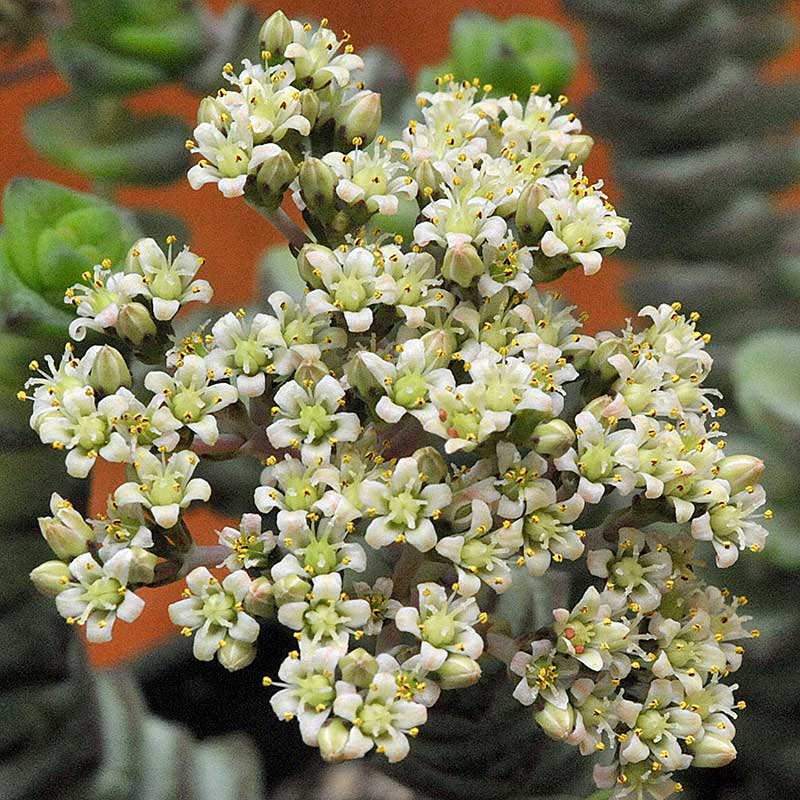

| |
| Crassula muscosa is native to Namibia and South Africa. It's very susceptible to root rot. |


| ||
| Crassula perforata is from South Africa. As with many other Crassula, it absorbs water deposited on its leaves (fog and dew); they swell up to 20% of their thickness this way. |


| ||
| Cylindropuntia subulata is native to the Peruvian Andes. The native form is tree-sized, but this form is supposed to stay pot-sized. |


| ||
| Delosperma echinatum's name derives from that for the British hedgehog Echinus, prickly; the plant itself is native to South Africa. |
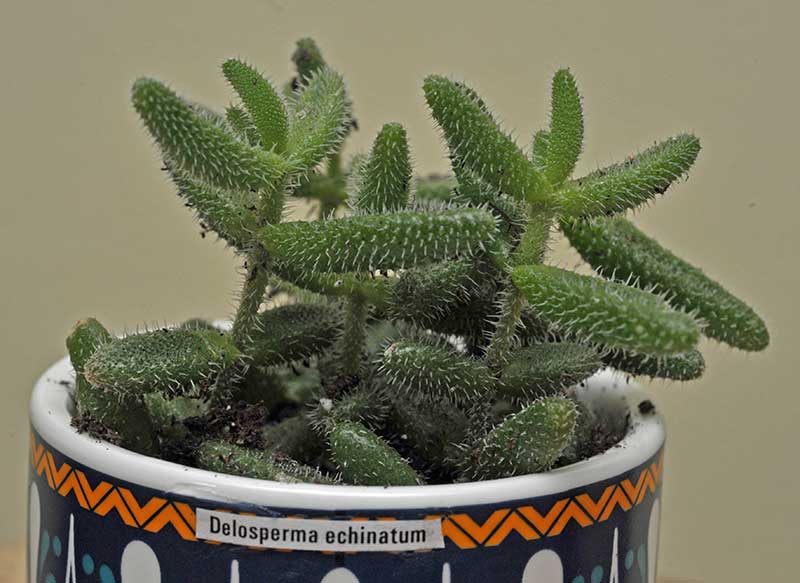

|
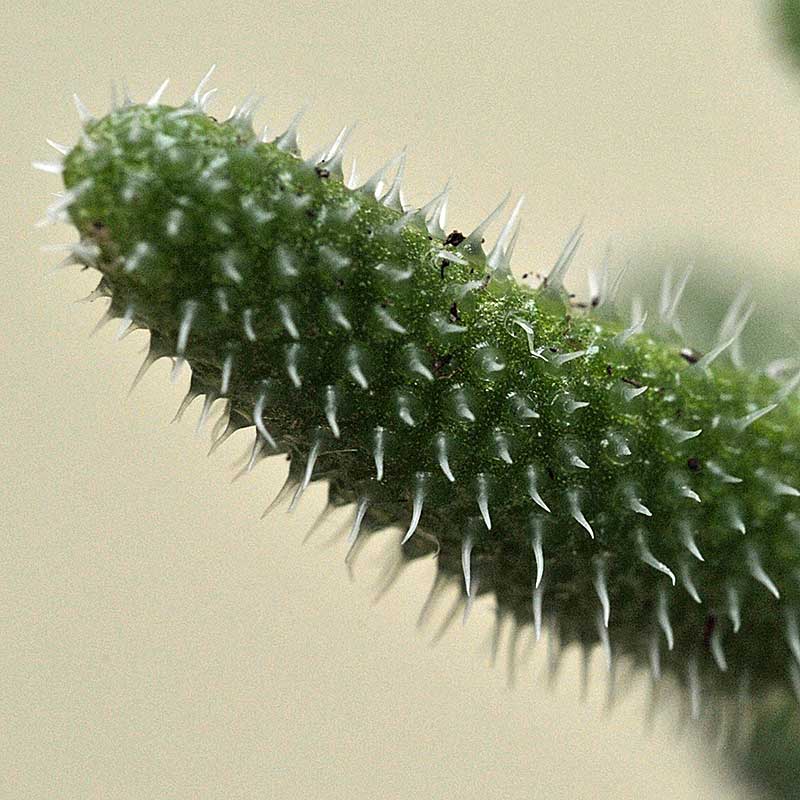

| |
| Duvalia corderoyl is native to South Africa and has 5 cm flowers that attract carrion flies and beetles. |
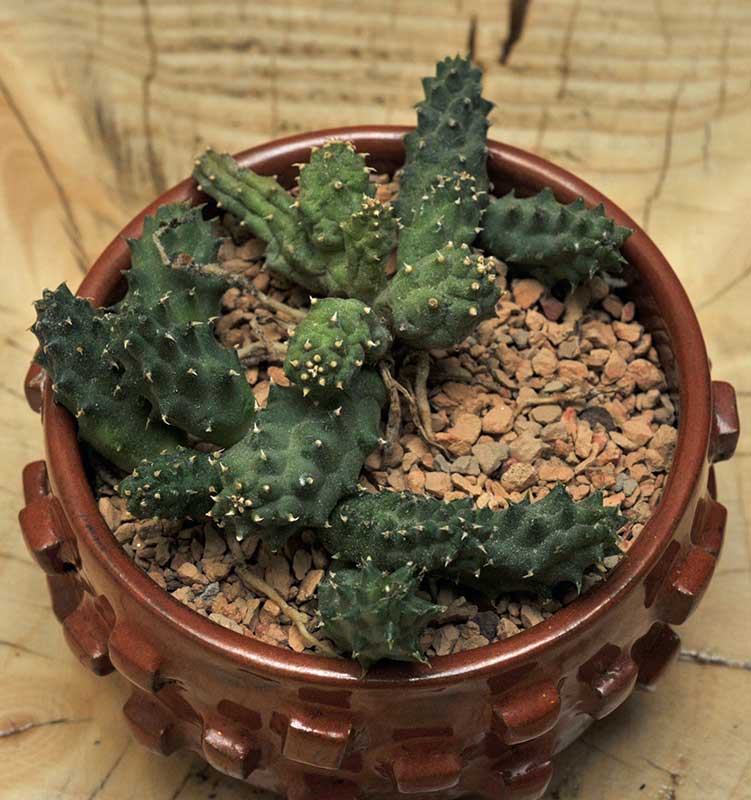

| ||
| Echeveria agavoides is from Mexico. |
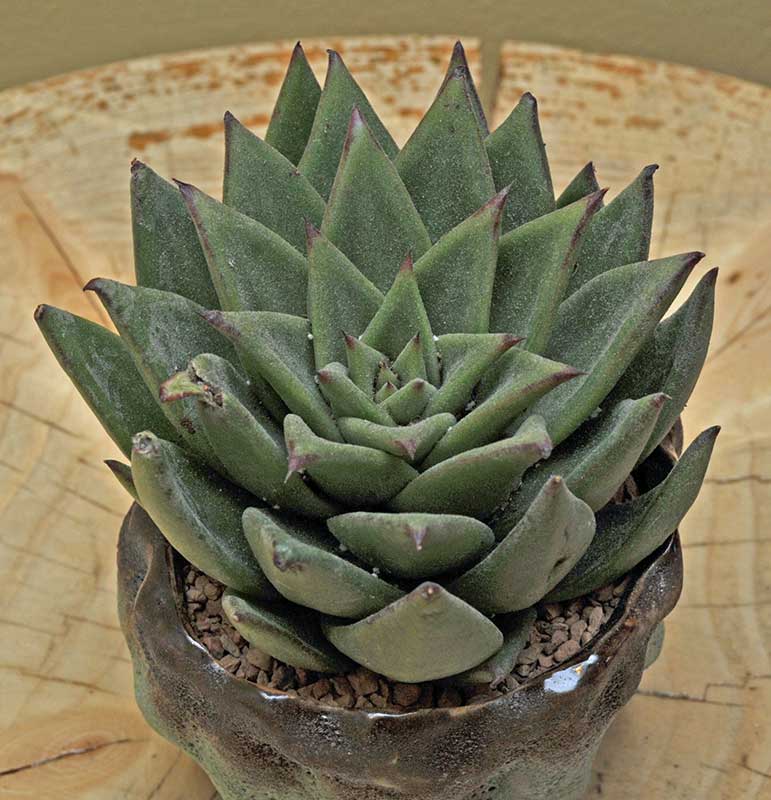

| ||
| Echeveria minima is from Mexico and the smallest of its genus. |
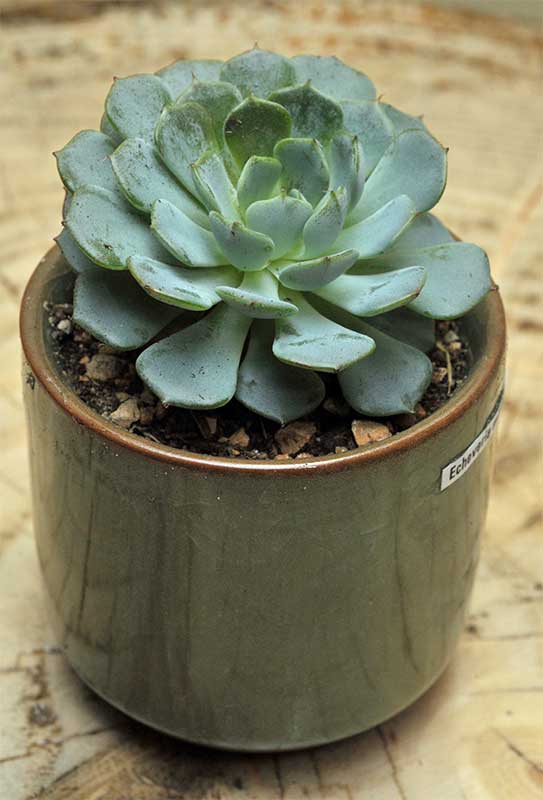

|
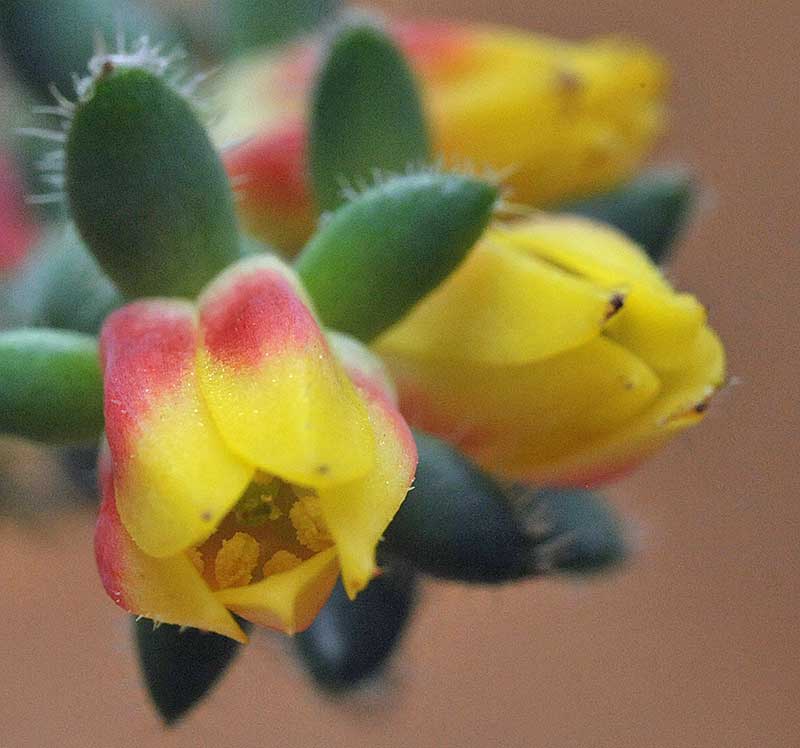

| |
| Echeveria setosa var.deminuta (E.rundelli) is also native to Mexico. |
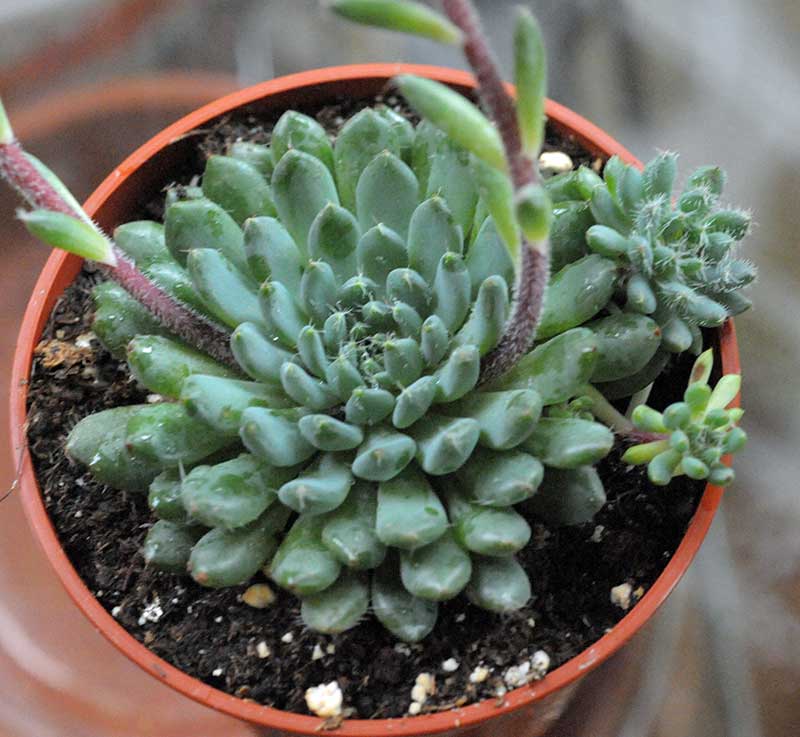

|
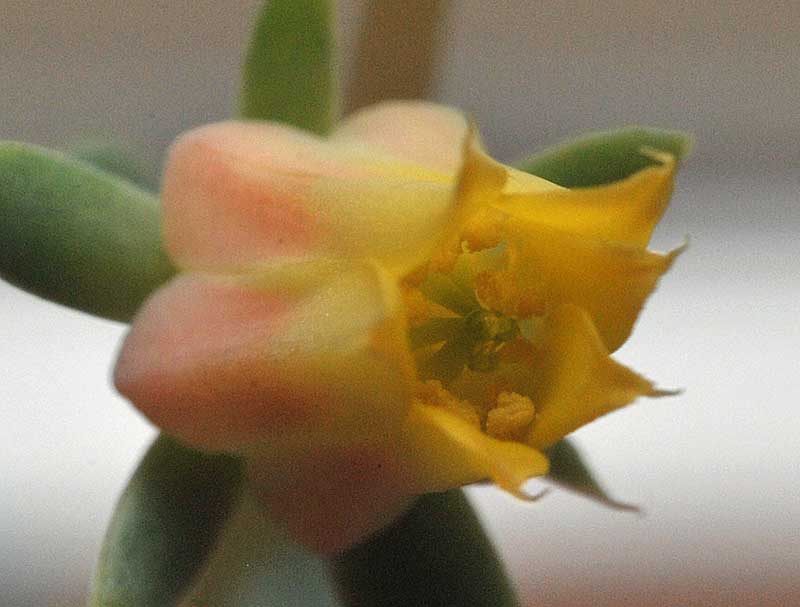

| |
| Echinopsis caulescens, one of the 'barrel' cacti, is from Bolivia. |


| ||
| Echinopsis obrepanda, known as the Easter Lily cactus from its blooming time, is from Bolivia. |
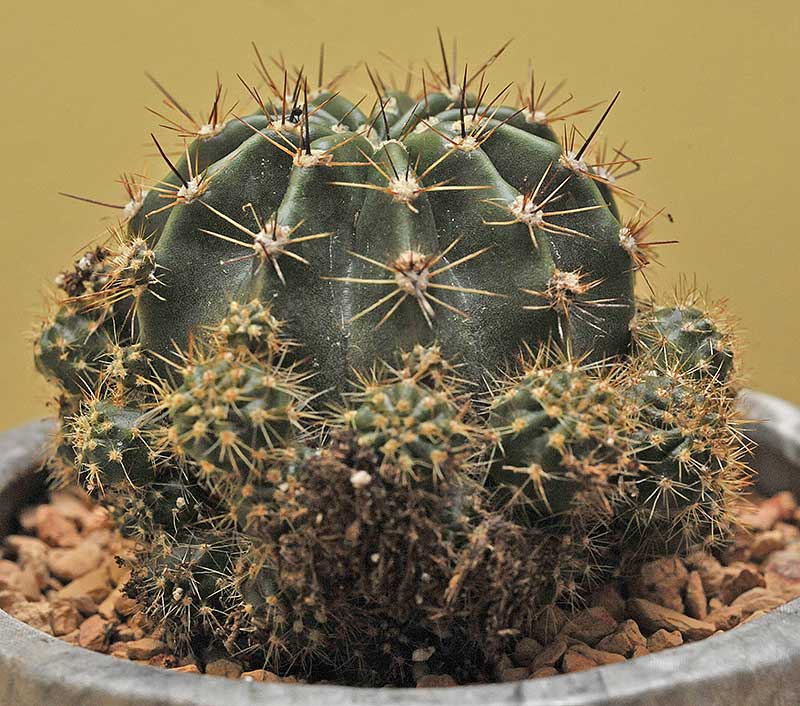

| ||
| Euphorbia (formerly Monodenium) coccineum is native to Tanzania. As with all Euphorbia, the sap causes a skin rash for most people and is best avoided. |
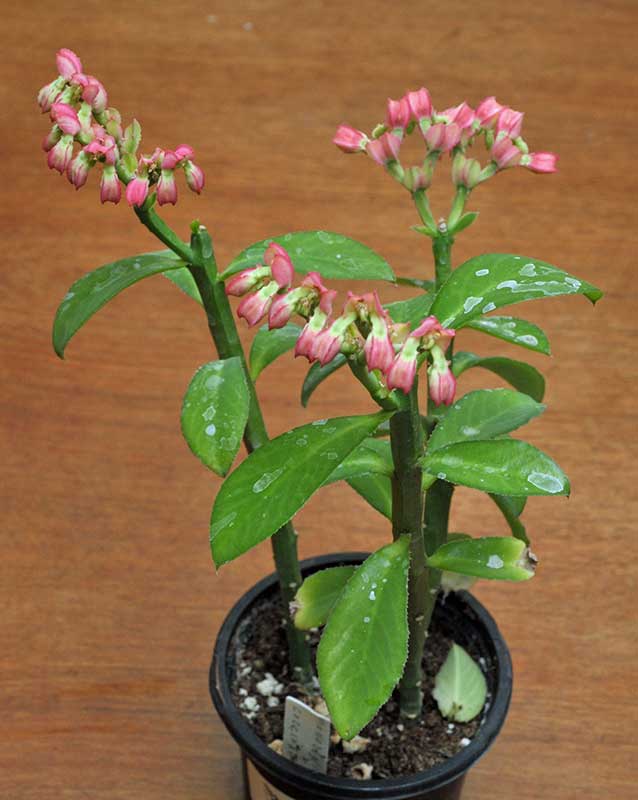

|
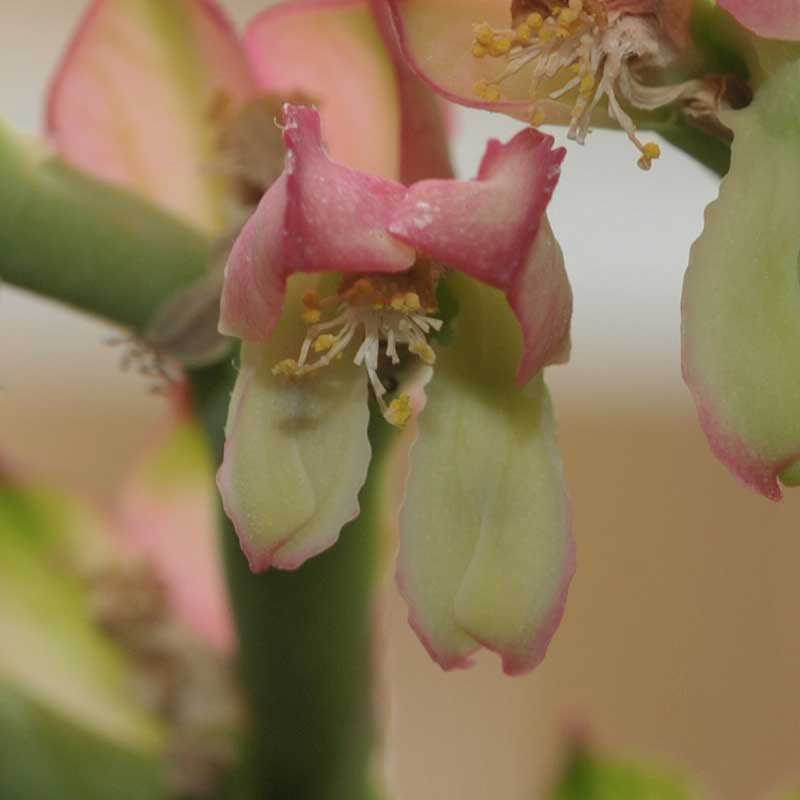

| |
| Euphorbia knuthii is from southern Africa. When older, it will develop an underground caudex. If the plant is potted with the caudex displayed above ground, the caudex stops growing. |
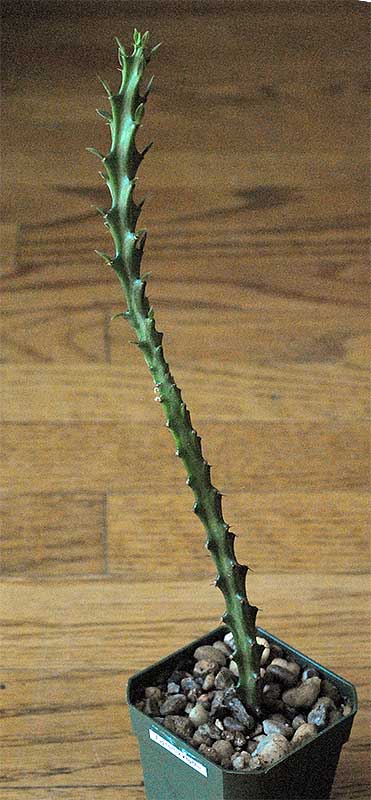

| ||
| Euphorbia tuberculata is also from South Africa. This one is still getting rooted. |


| ||
| Fenestraria rhopalophylla aurantiaca is native to South Africa. |


| ||
| Ficus retusa originates from the Malay Archipelago and is one of many tropical caudiciform trees that are popular for bonsai. |
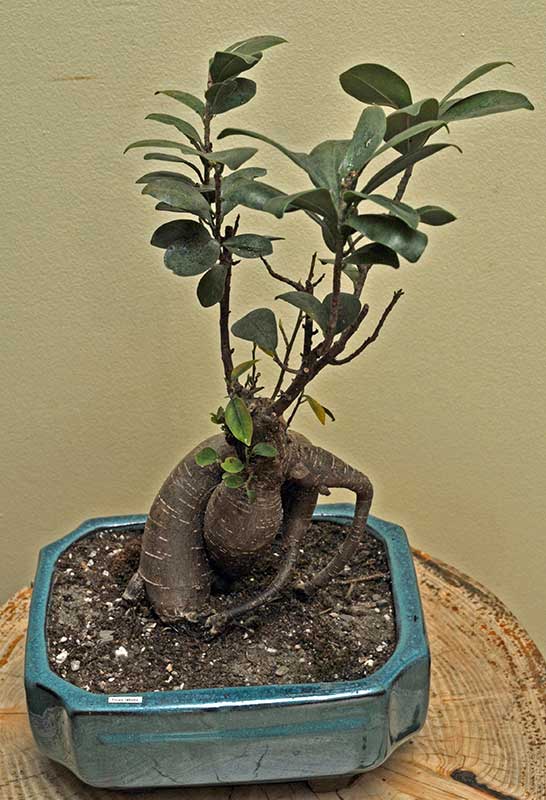

| ||
| Gasteria 'Little Warty' is a shallow-rooted hybrid from South Africa; it's susceptible to fungal infections so bottom watering is important. |


| ||
| Graptopetalum pentandrum is from Mexico |
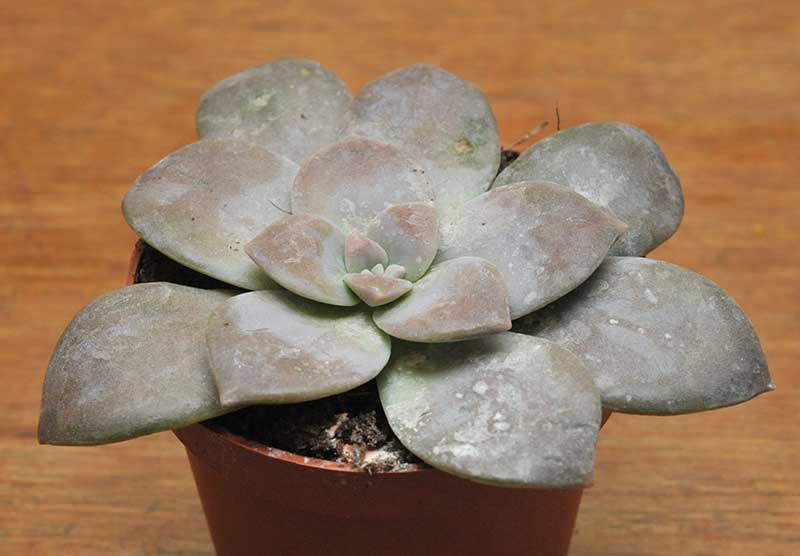

| ||
| Greenovia diplocycla is from the Canary Islands. It doesn't form offsets and each leaf rosette dies after blooming, so it must be propagated by seed. Fortunately it's self-fertile so I might manage to keep it. |
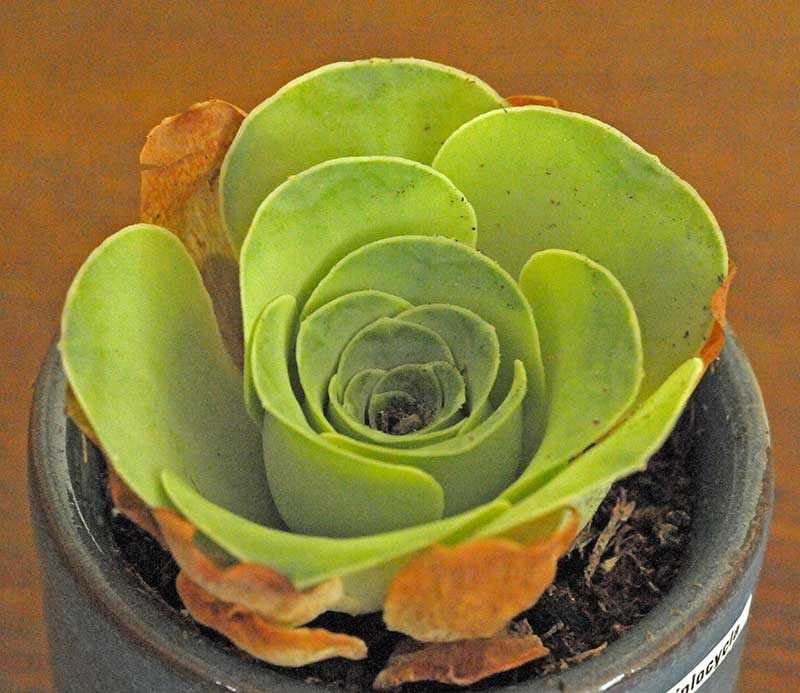

| ||
| Gymnocalycium denudatum is native to central South America. |
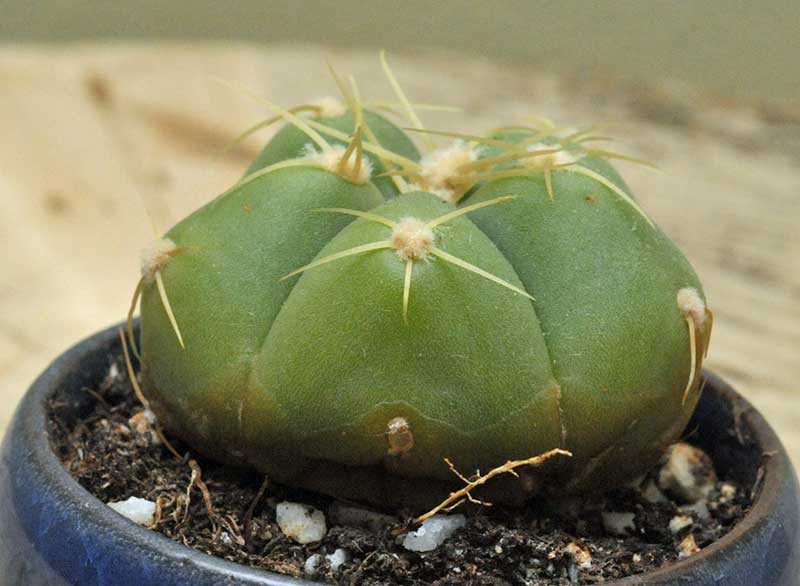

| ||
| Hatiora rosea from Brazil, known as the Easter Cactus from its blooming time, is an epiphyte in its natural habitat. When grown in soil, the roots need access to air or it rots. It needs a cool (but non-freezing) winter to bloom, cooler than most North American homes. |
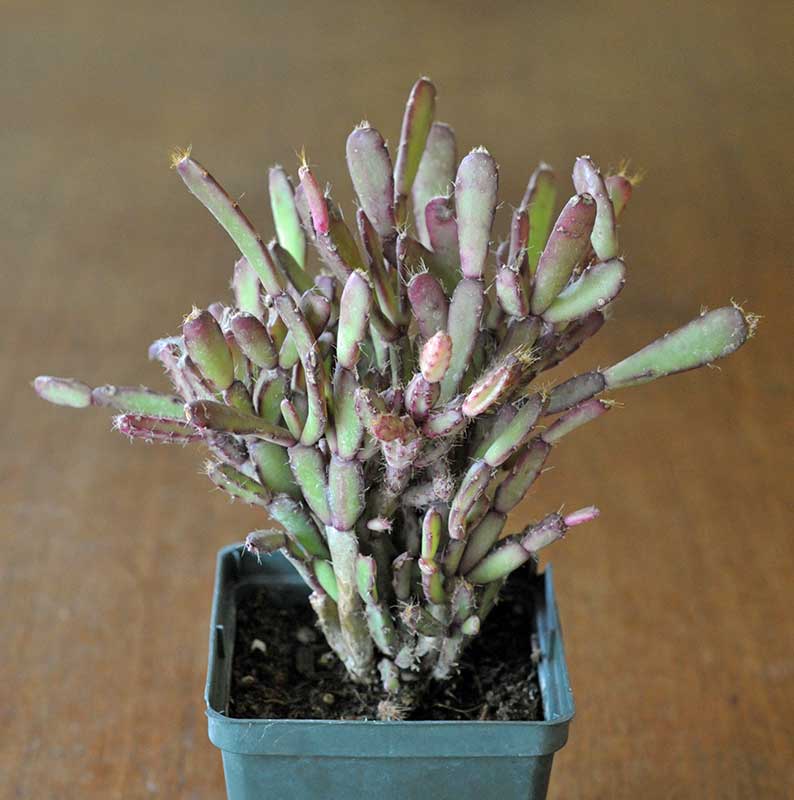

| ||
| Haworthia cooperi is a variable species from the Eastern Cape of South Africa. It's known by many disputed names and varieties; this one seems best known as var.gordianum. |
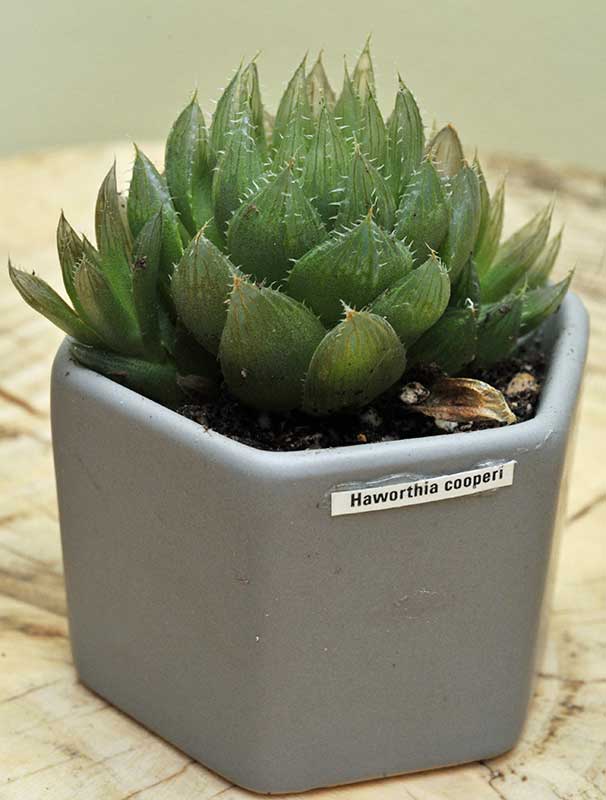

|
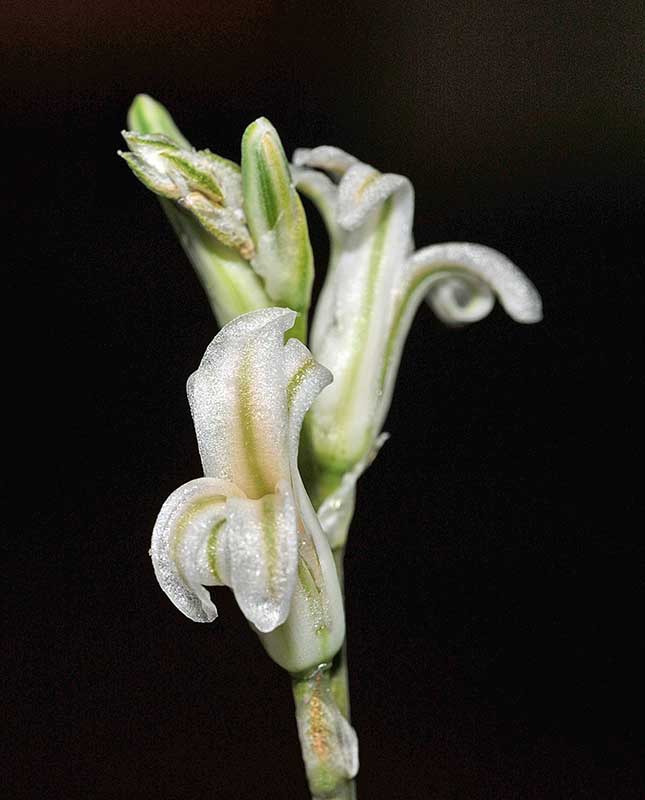

| |
| Haworthia pygmaea originates from South Africa where it grows sunken beneath the ground with only flattened leaf tops showing on the surface; its roots pull it down to that level. However, its flower stalk is 25 cm high, enabling bee-flies to find it. |
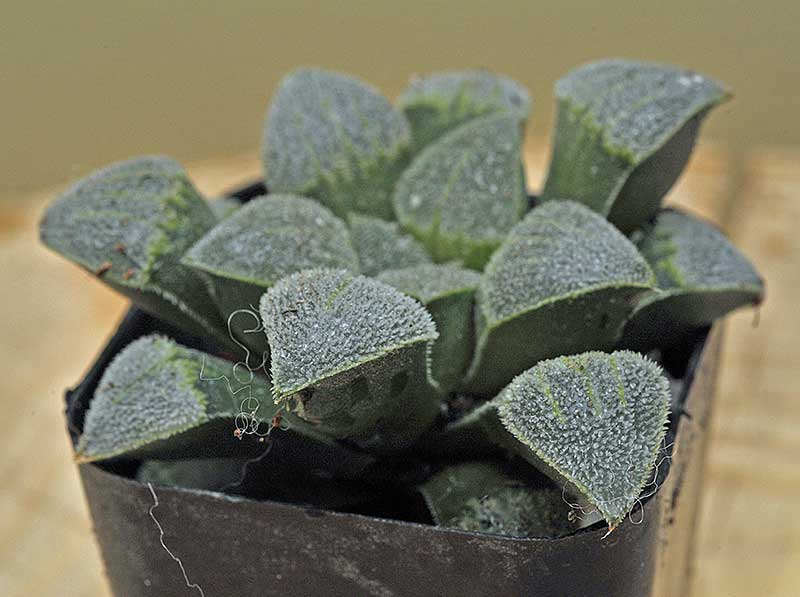

|
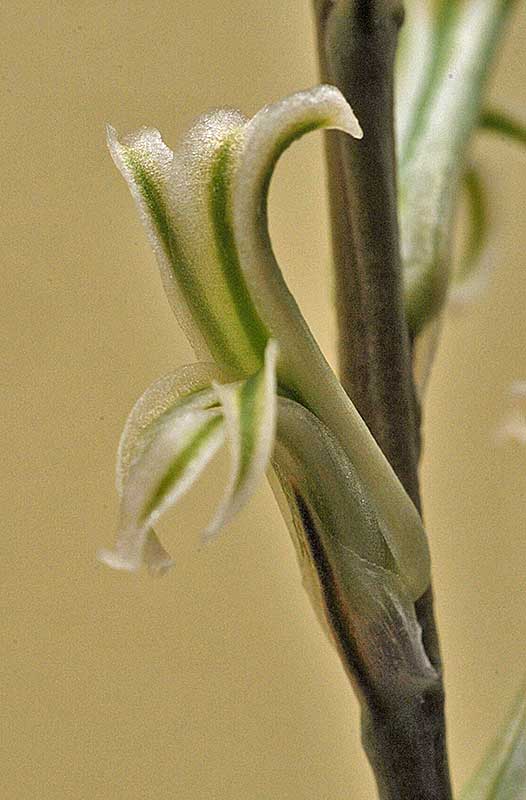

| |
| Haworthia springbokvlakensis ("flat areas where springbok antelopes are found" in Africaans) comes from the dry interior of South Africa. It grows almost buried, in deep shade and covered with dust. |
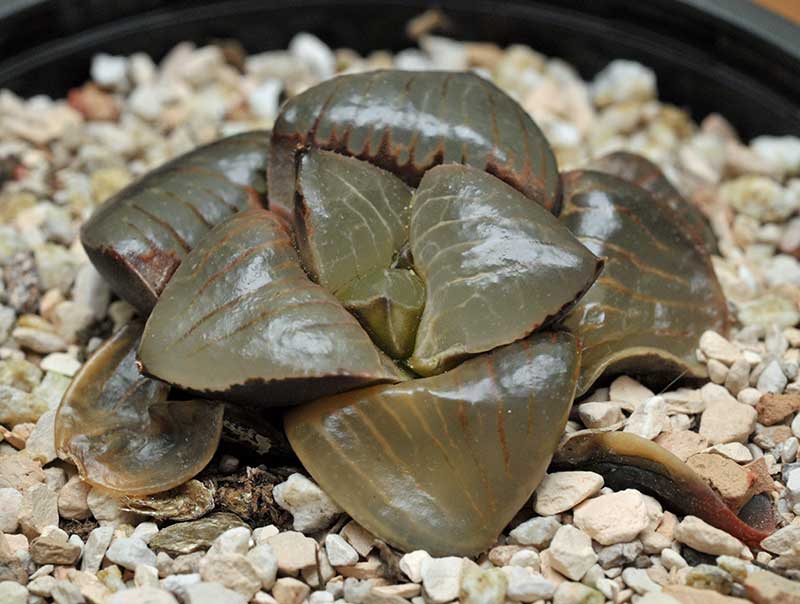

|
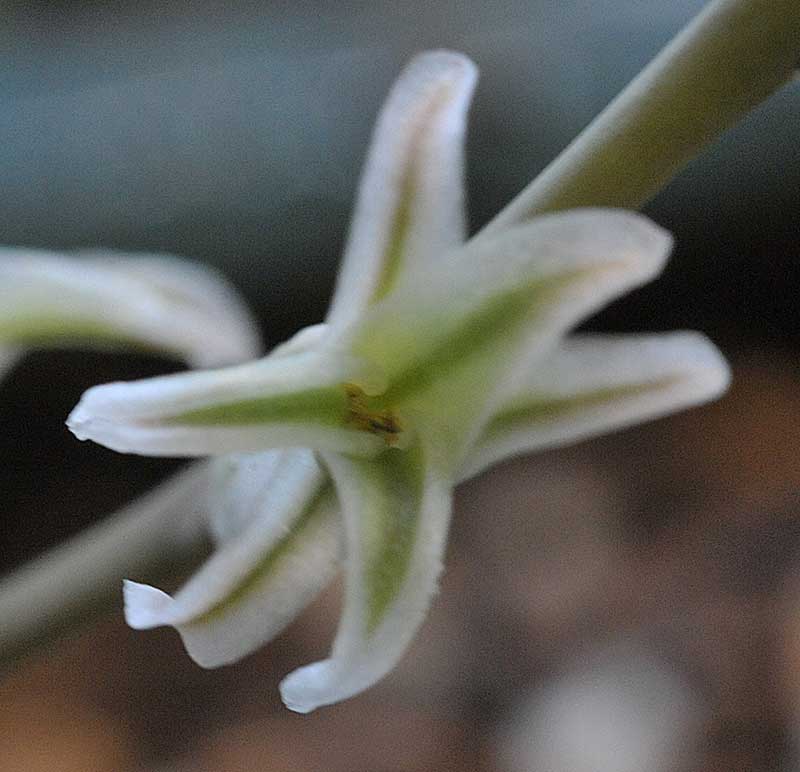

| |
| Huernia zebrina, known as a lifesaver flower, is native to south-west African deserts. |


|
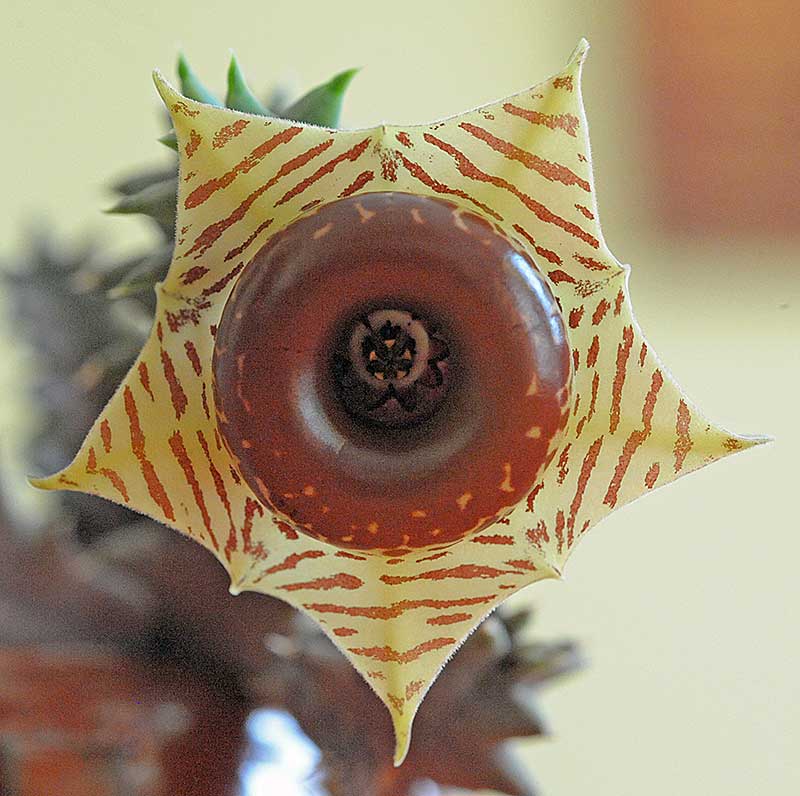

| |
| Hylocereus undatus is a climbing shade-tolerant soft-stemmed cactus that probably originated from the Caribbean. Hybrids and selections are now grown around the tropical world for fruit: pitaya or dragon fruit. Unopened flowers are also eaten as a vegetable. Most plants have 3-sided stems, but this one is 4-sided; 5-sided also exist. |
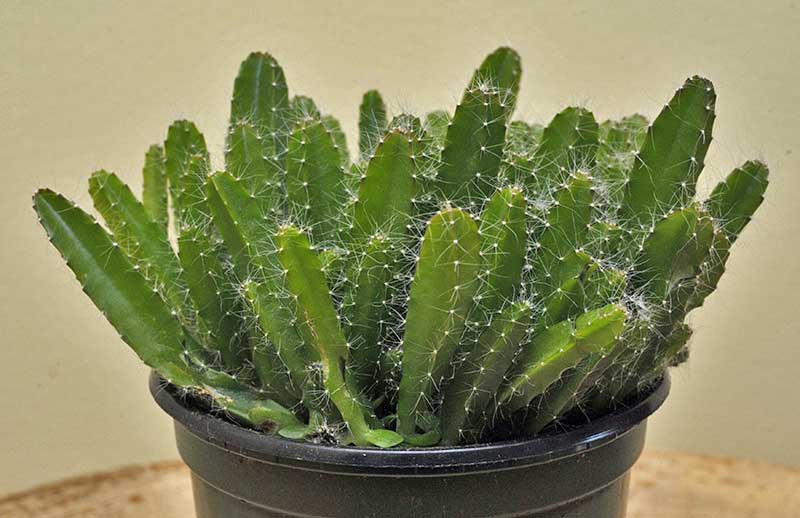

| ||
| Kalanchoe daigremontiana from Madagascar only reproduces vegetatively from plantlets that develop on its leaf margins. Although it does bloom, no male plants have ever been found. It's nicknamed 'mother of thousands' for good reason. A too-easy succulent to grow and multiply. |


| ||
| Kalanchoe hybrids based on K.bossfeldiana are widely sold. All parts of all Kalanchoe contain cardiotoxic bufadienolides to deter herbivores, so should be kept away from small children and pets. |


| ||
| Kalanchoe beharensis has velvety leaves and is from Madagascar. |
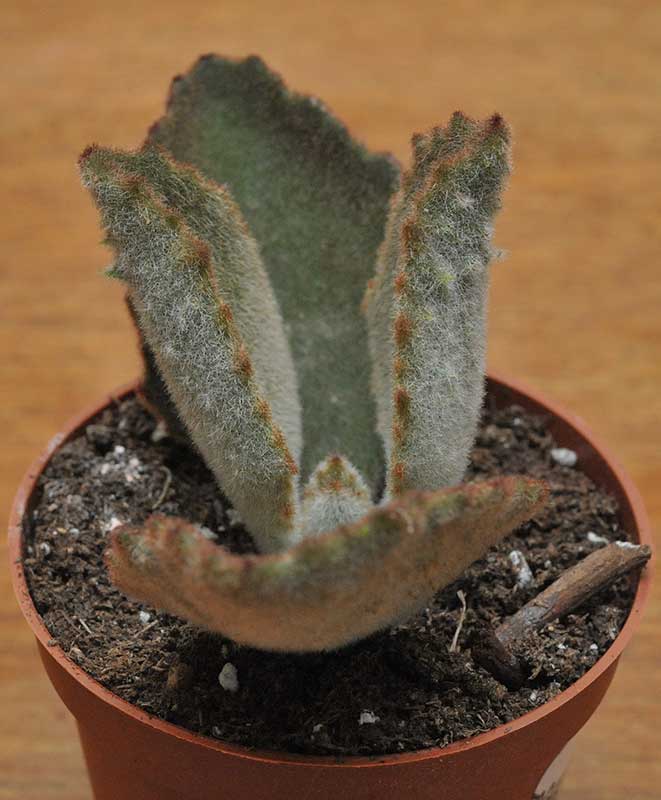

| ||
| Kalanchoe humilis is from the Tanzanian area of Africa. |
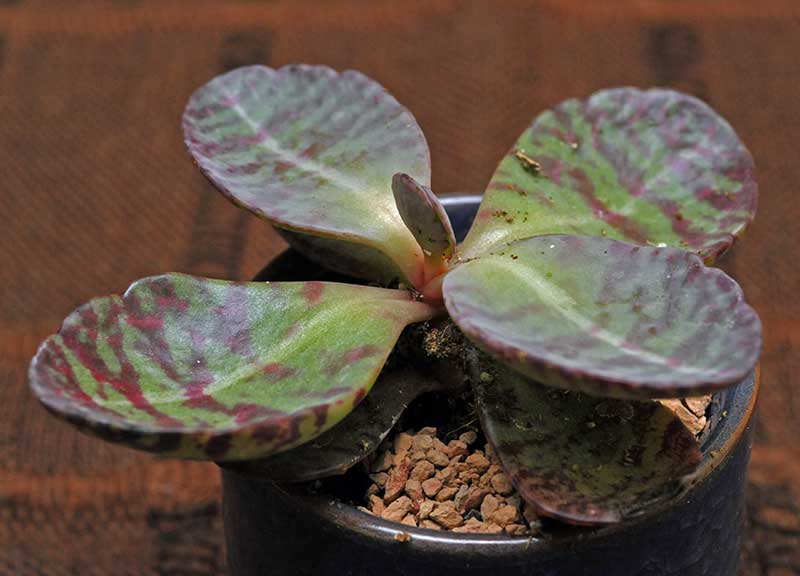

| ||
| Kalanchoe tomentosa is from Madagascar. The pot is from the movie Guardians of the Galaxy; to me it's a symbol of my love for plants and woods. |


| ||
| Kleinia stapeliiformis is native to the southern Cape of South Africa. |
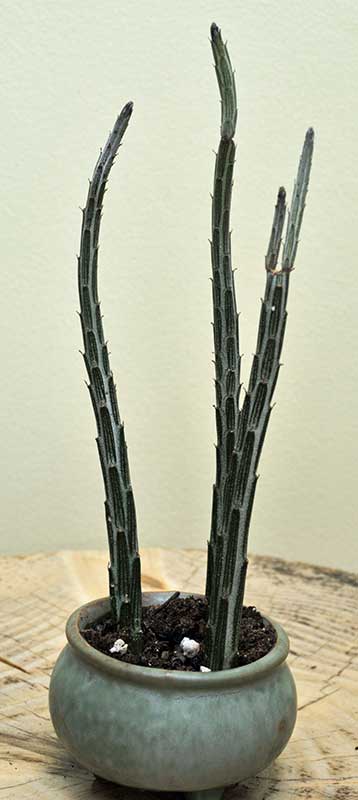

| ||
| Ledebouria socialis is native to the Eastern Cape Province of South Africa. It's widely known as Scilla violacea (its original name) or Ledebouria violacea. It's a bulbous succulent in that its bulb is used both for food storage during dormancy and for water storage. |
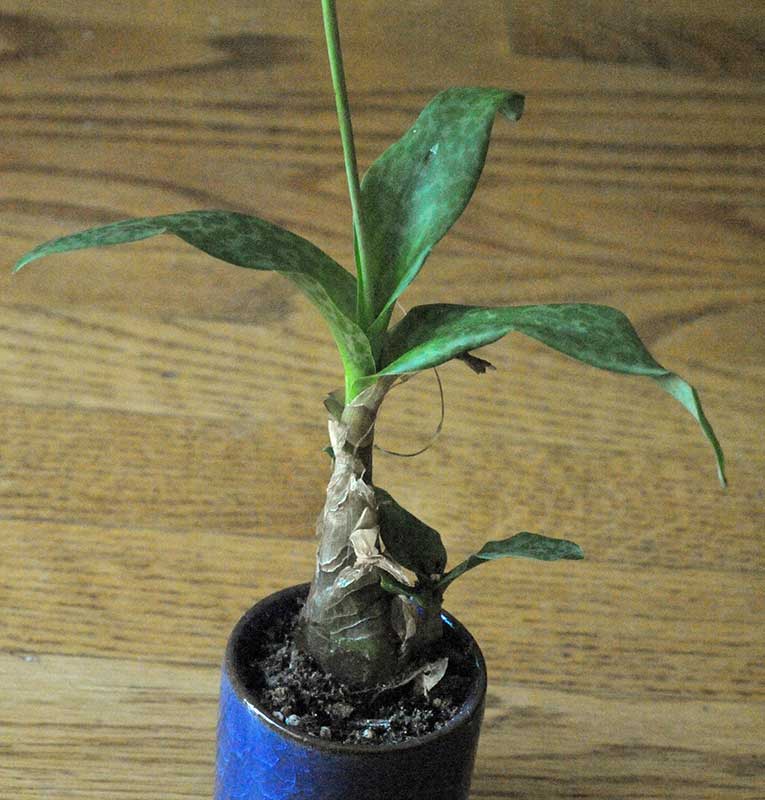

|
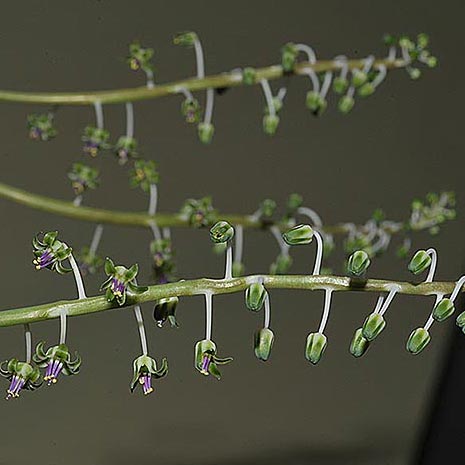

| |
| Lithops are native to southern Africa in arid stony environments. They're called 'living stones' for good reason: in their sunny arid native habitat they mimic the stones around them so perfectly that they're almost impossible to spot there except when they flower. The top surface is translucent, the photosynthetic parts are located inside the plant at its base. There are hundreds of named species; most are just populations locally adapted to the colours of the stony surfaces they live on. |
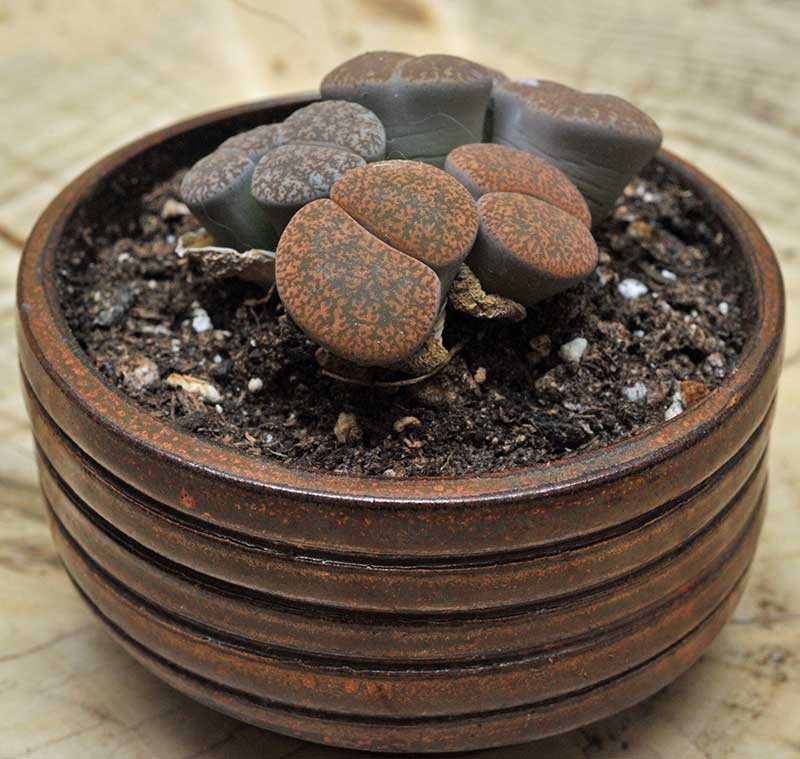

| ||
| Mammillaria bocasana is native to mountains of northern Mexico and often called "power puff" cactus. Unlike most cacti, its spines are hooked like burrs; instead of generating an electrical charge on the plant to attract fog droplets, they hook onto the fur of passing animals, pulling out a meristem at the hook base that can grow into a new plant. |
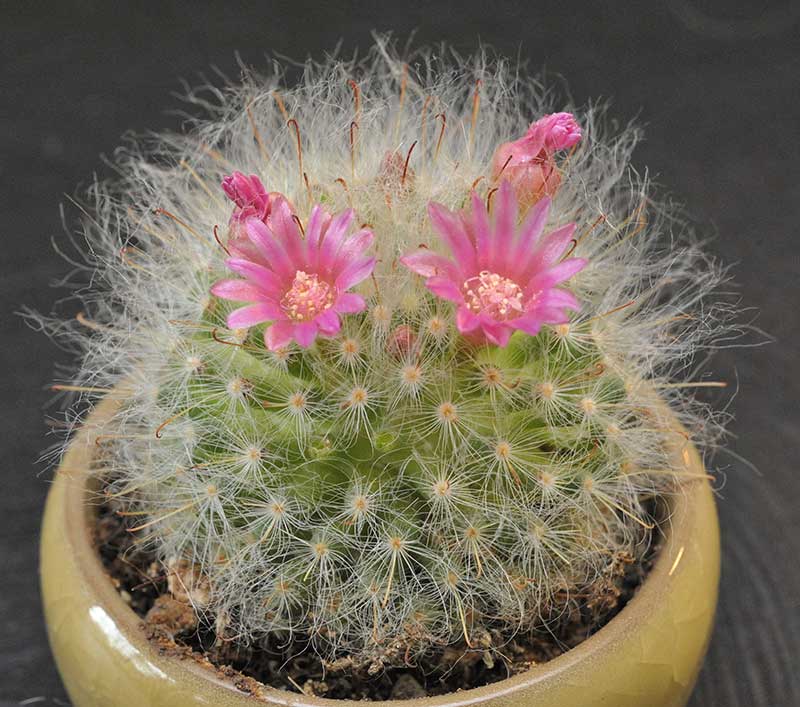

|
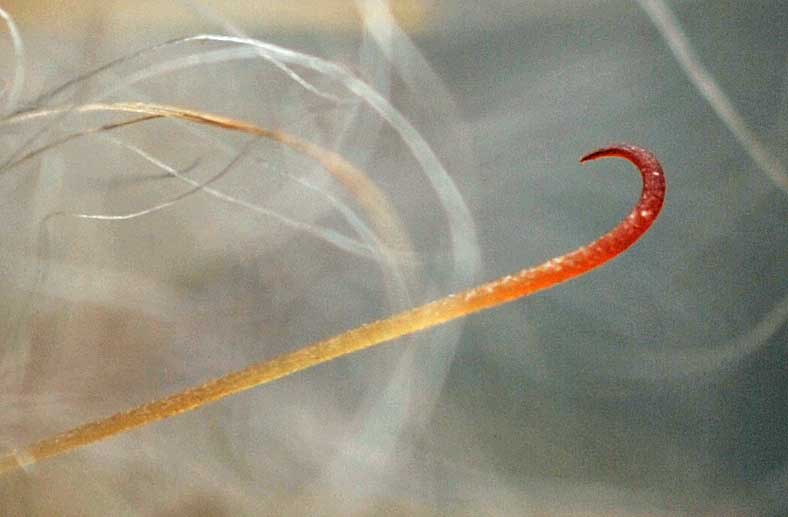

| |
| Mammillaria longimamma from Mexico forms large clumps with age, has a fairly large tap root, and needs a deep pot. |
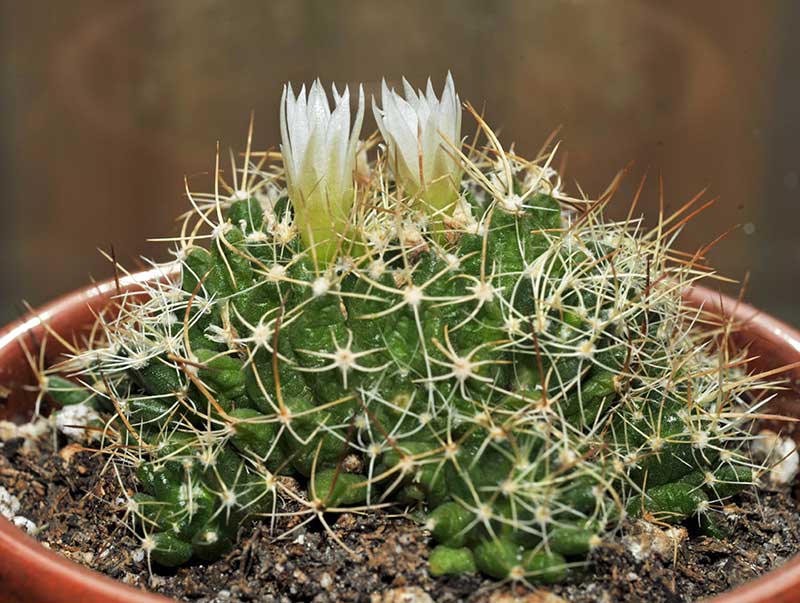

|
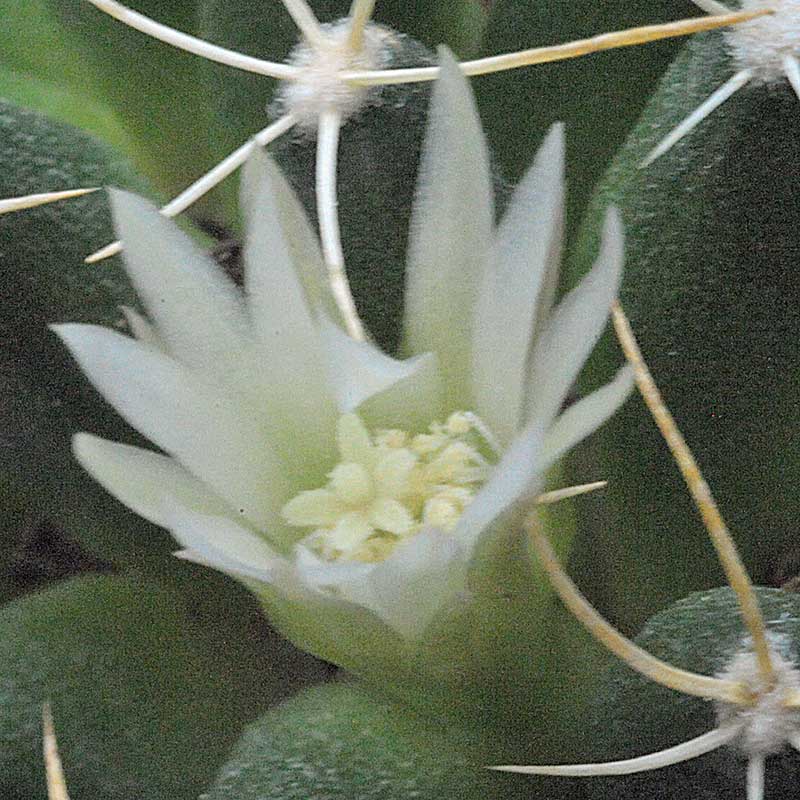

| |
| Mammillaria pringlei is from Mexico; some consider it a subspecies of M.rhodantha. |


|
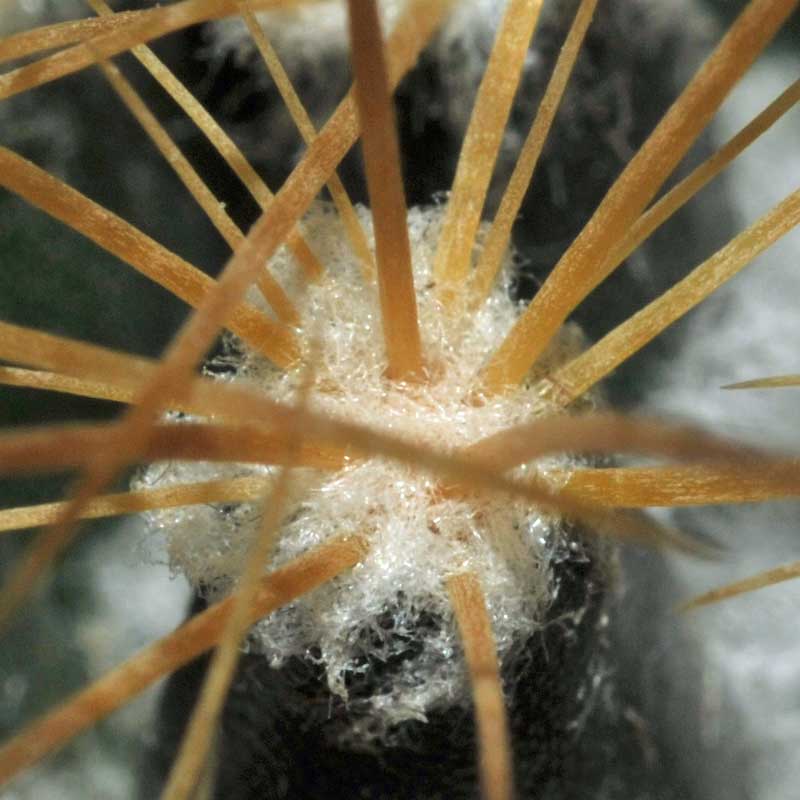

| |
| Monadenium ritchiei is native to Kenya; as a deciduous succulent it needs frequent but light watering. |
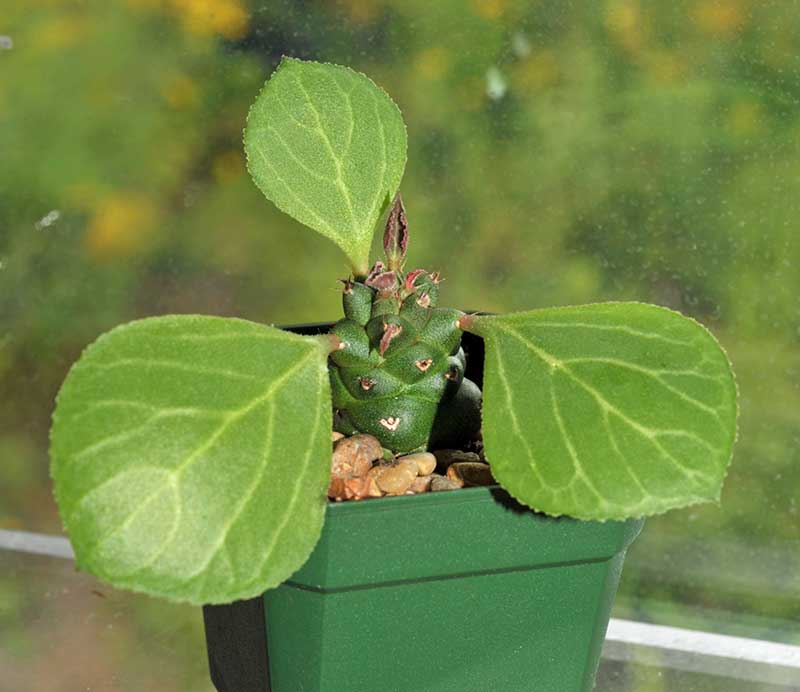

| ||
| Opuntia ficus-indica (often called O.vulgaris) was probably originally from central Mexico. It's been a domesticated crop plant in Mexico for 9000 years, and is now grown world wide in arid climates for its pads, juice and fruits. This is a variegated form. |
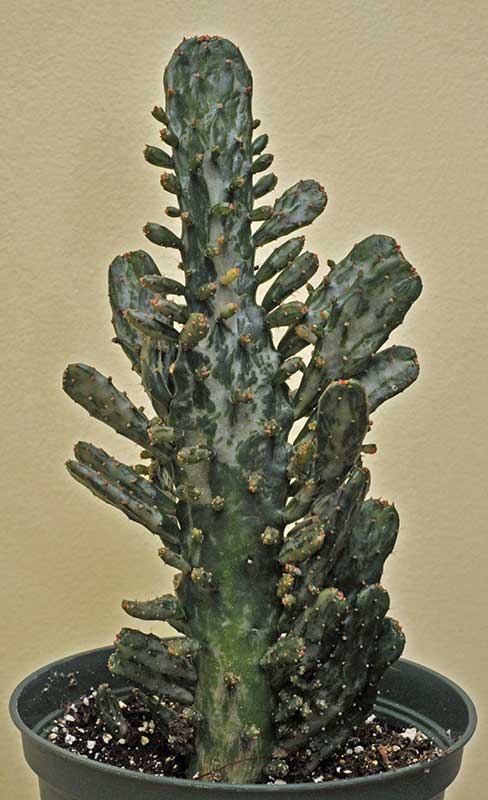

| ||
| Opuntia vestita, cristata form. The regular form is from South America; cristata forms rarely bloom. Tightly folded cristata cacti are sometimes called brain cacti. No one is sure what modifies the growing tip (meristem) to cause these mutations. |


| ||
| Orbea speciosa comes from Natal and is also known as O.macloughlinii. |
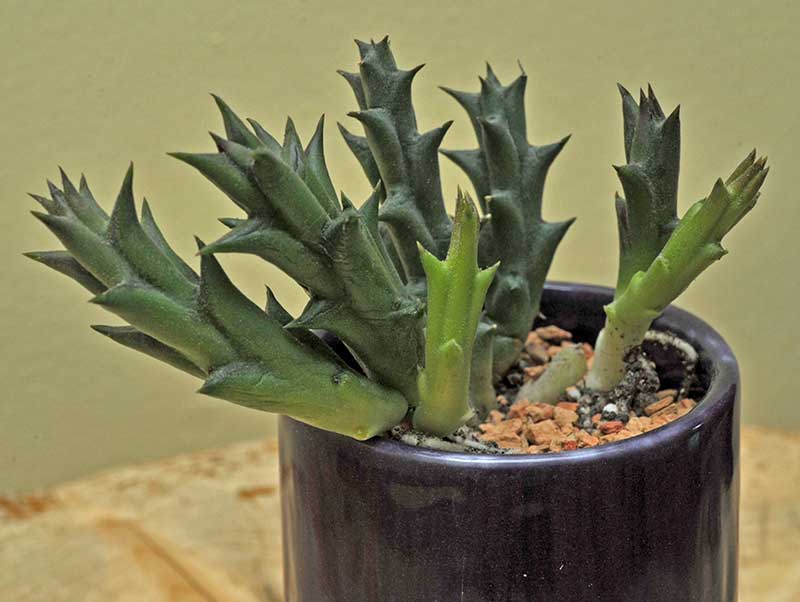

| ||
| Oreocereus trollii is native to Peru; its long orange spines combined with "wool" identify it. |
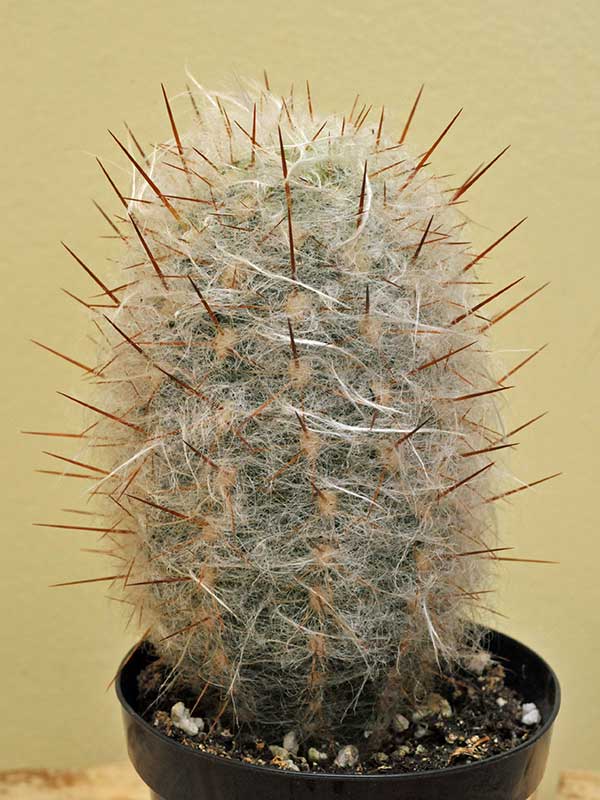

| ||
| Oscularia deltoides is a spreading succulent native to South Africa. I'm growing this one as a natural bonsai. |


| ||
| Pachyphytum ganzhou is probably a hybrid, P.viride×Sedum craigii. |


| ||
| Pachypodium bispinosum's caudiciform stem is mostly below ground in its native South Africa, but is usually cultivated to show it off, as here. It's indistinguishable from P.succulentum when not in bloom. |
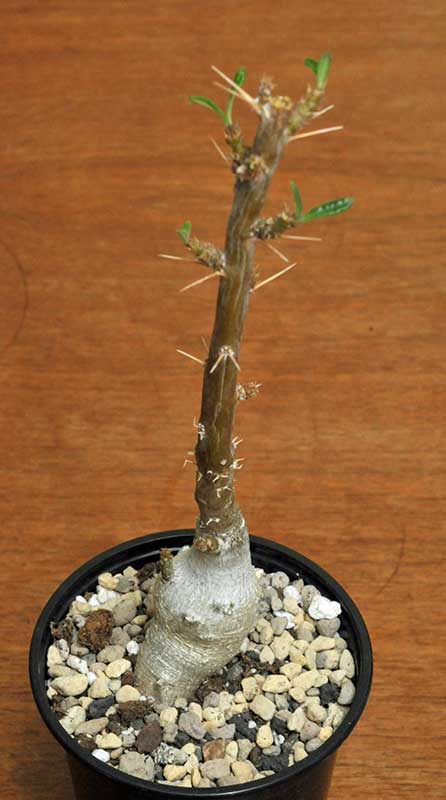

| ||
| Pachypodium lamerei is from Madagascar. Despite its leaves, most of its photosynthesis is done by the trunk. |
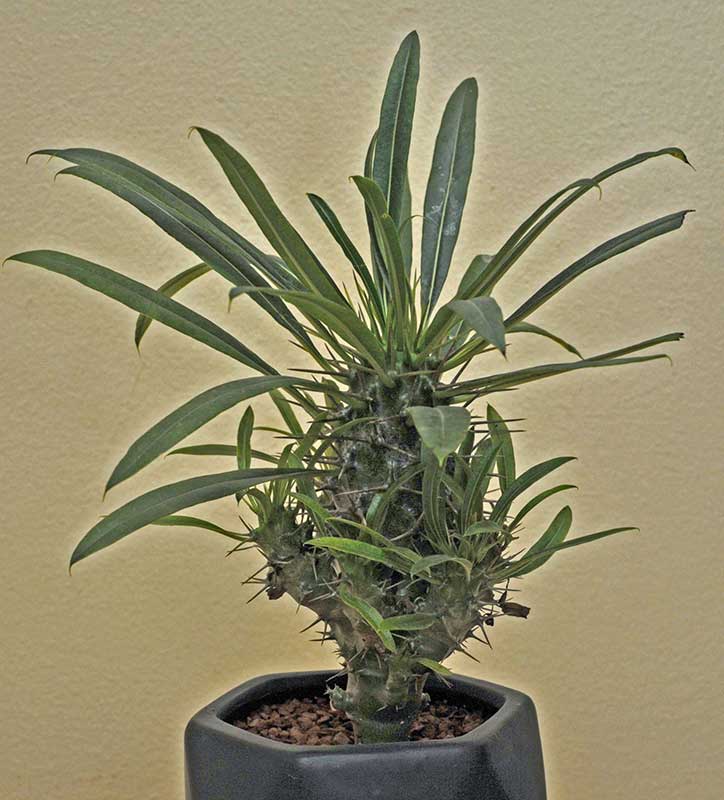

| ||
| Peperomia graveolens is native to the Andes of southern Ecuador. |
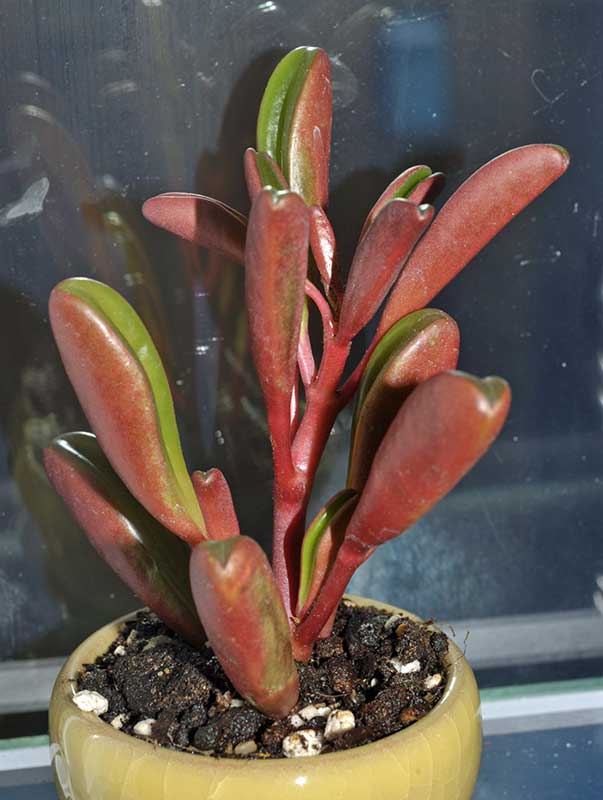

| ||
| Parodia leninghausii is native to southern Brazil. |
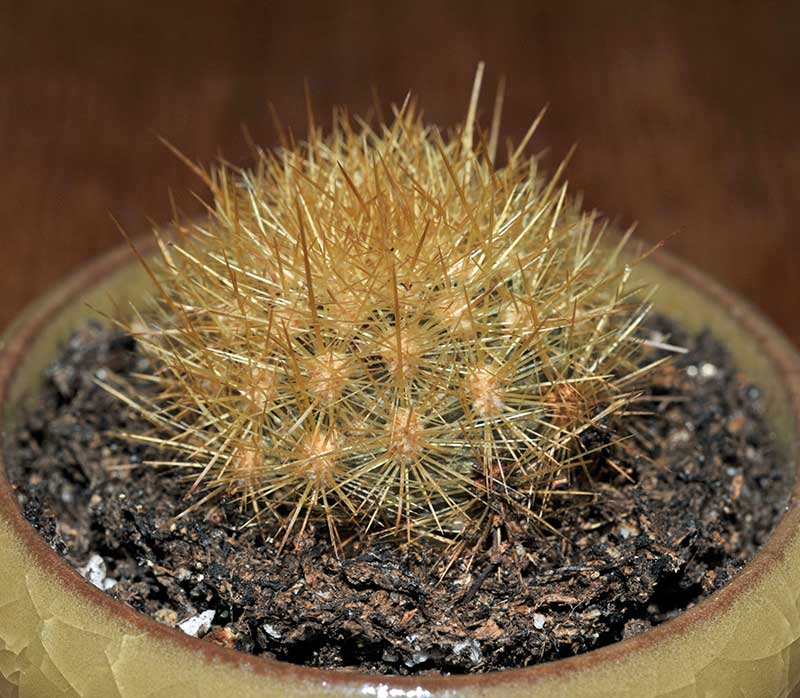

| ||
| Pleiospilos nelii is from Africa; given its native green colouring, it presumably lives among ground mosses. |


|
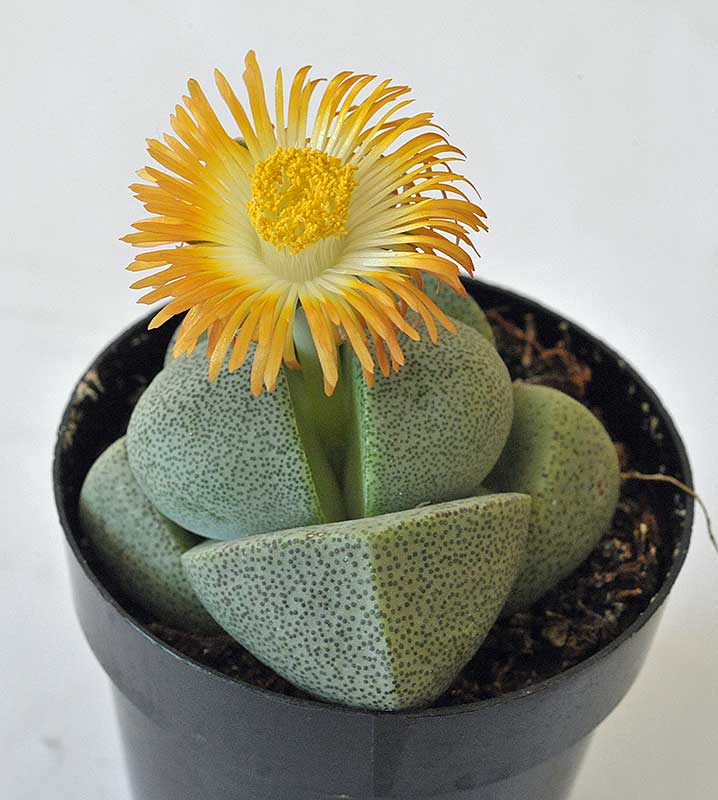

| |
| Portulacaria afra is a a soft-wooded semi-evergreen succulent plant from South Africa. It's popular for indoor bonsai; this is the variegated "Medio-picta" form. |
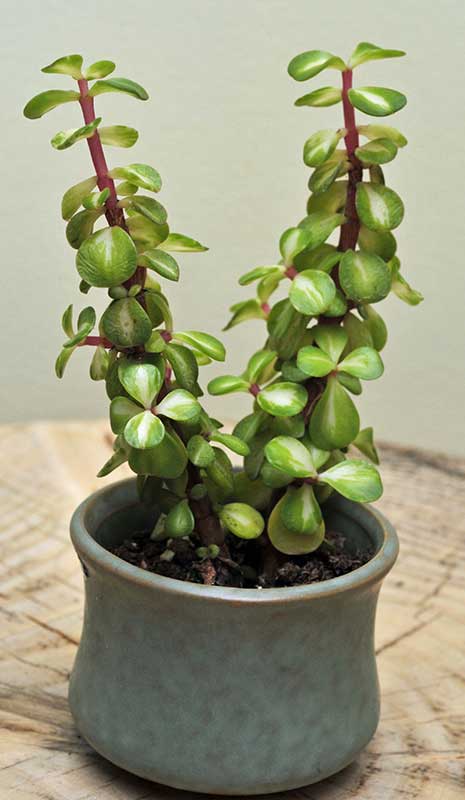

| ||
| Pseudorhipsalis ramulosa (aka Disocactus ramulosus) is native to Central and South America. Unlike many succulents, it requires regular watering. It develops more red colouration with increased sun and age, but yellows in direct sunlight. |
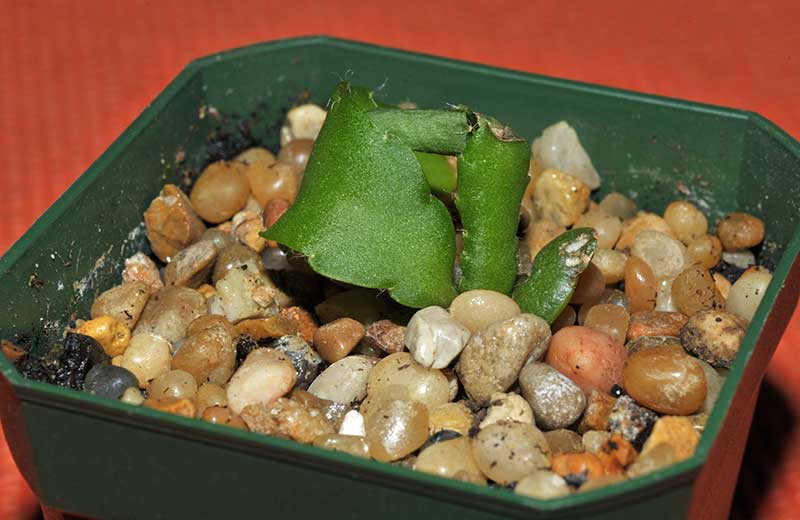

| ||
| Rebutia 'Sunrise' (R.heliosa X R.albiflora) parents are native to high regions of South America. |
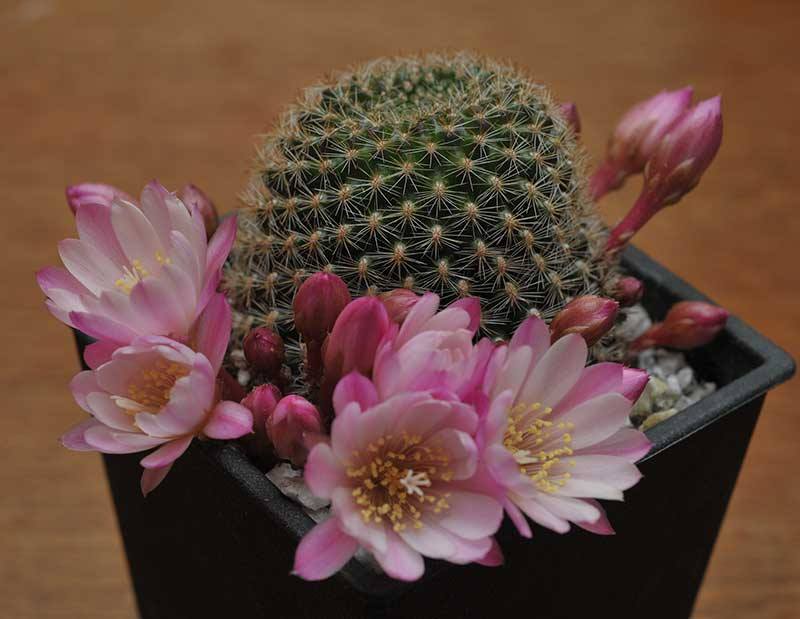

| ||
| Rhipsalis pilocarpa is from Brazil; as with many other unusual popular species, it's native only to a few isolated locations. It naturally grows as an epiphyte, but accepts acid peat-rich soil. |
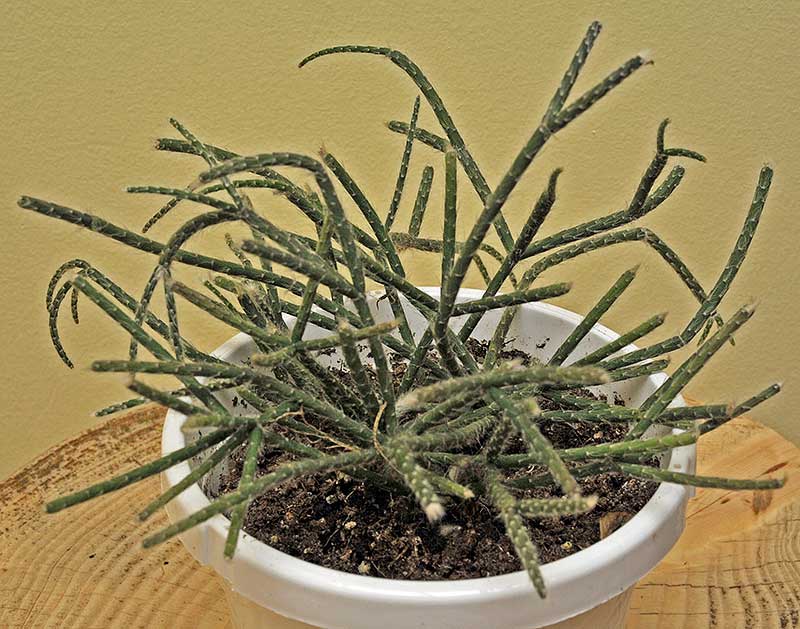

|
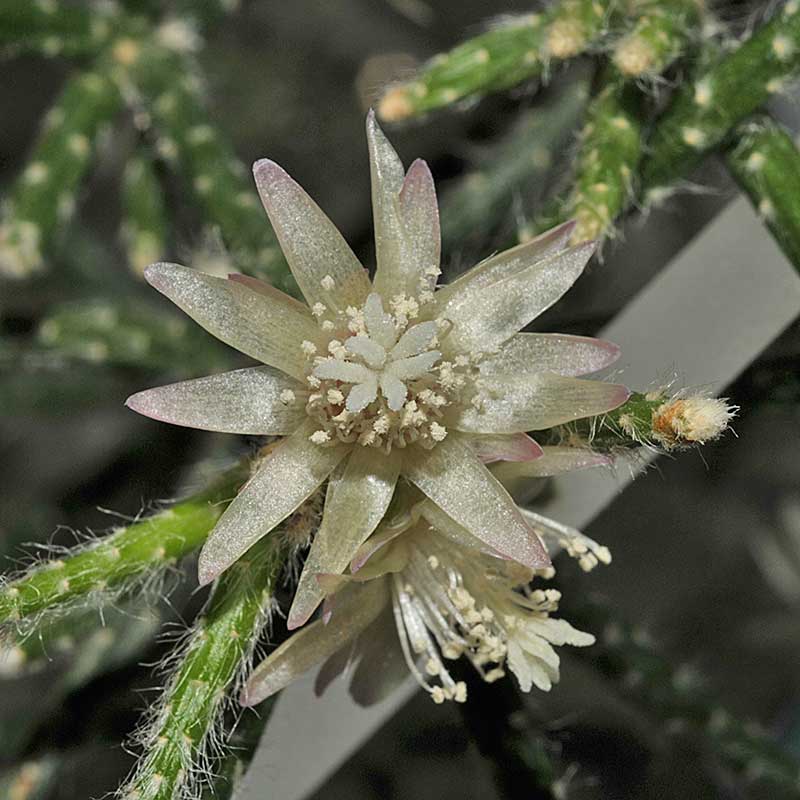

| |
| Schlumbergera x buckleyi is an epiphyte from Brazil known as the Christmas cactus from its blooming time in Canada. |
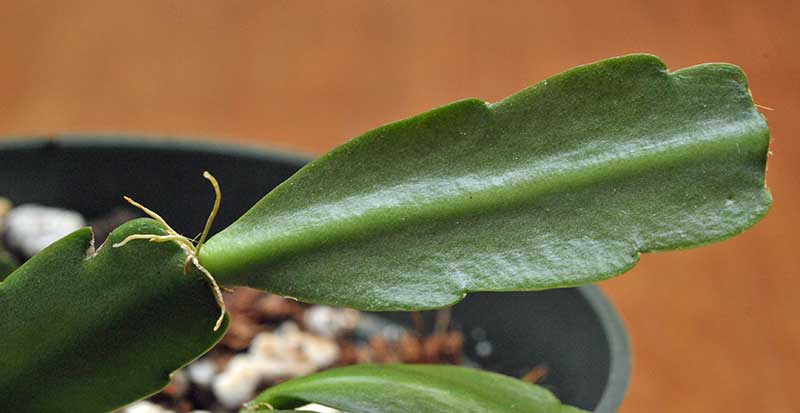

| ||
| Schlumbergera truncata is an epiphyte from Brazil; it's often called Thanksgiving cactus but mine always bloom best in late winter. |
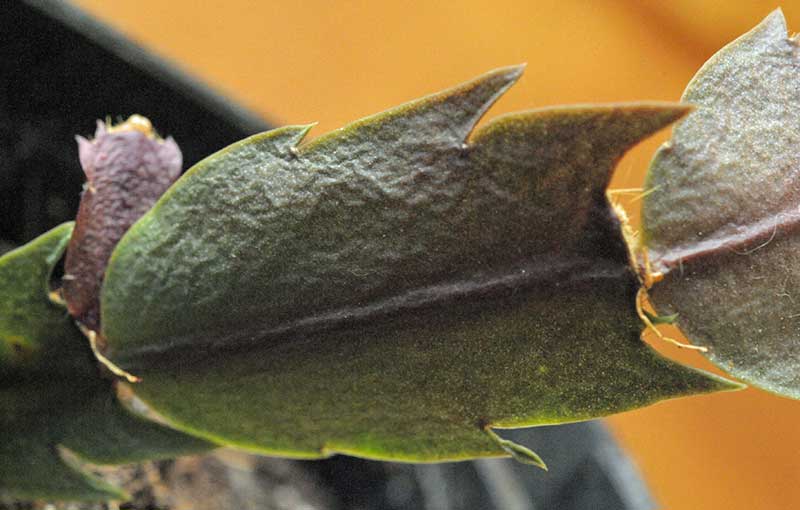

|
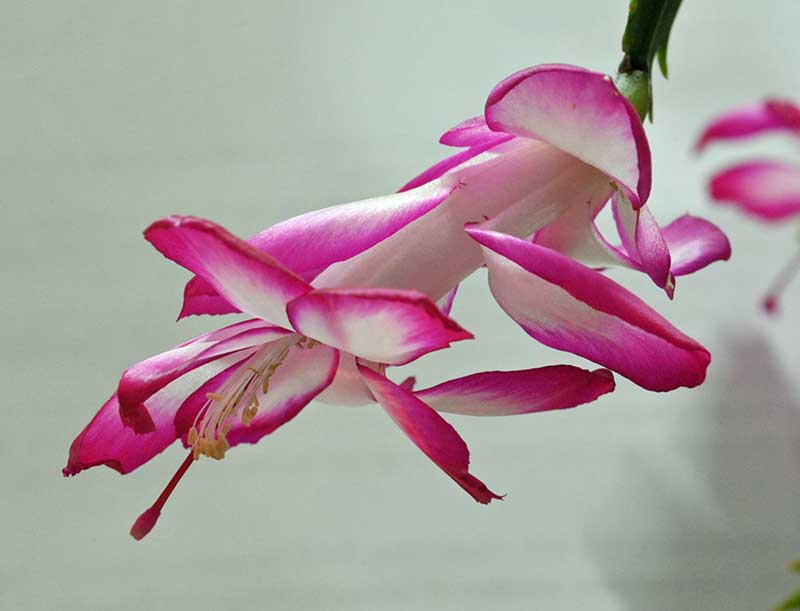

| |
| Sedum 'Little Missy' is supposed to be hardy in Ottawa; time will tell. |
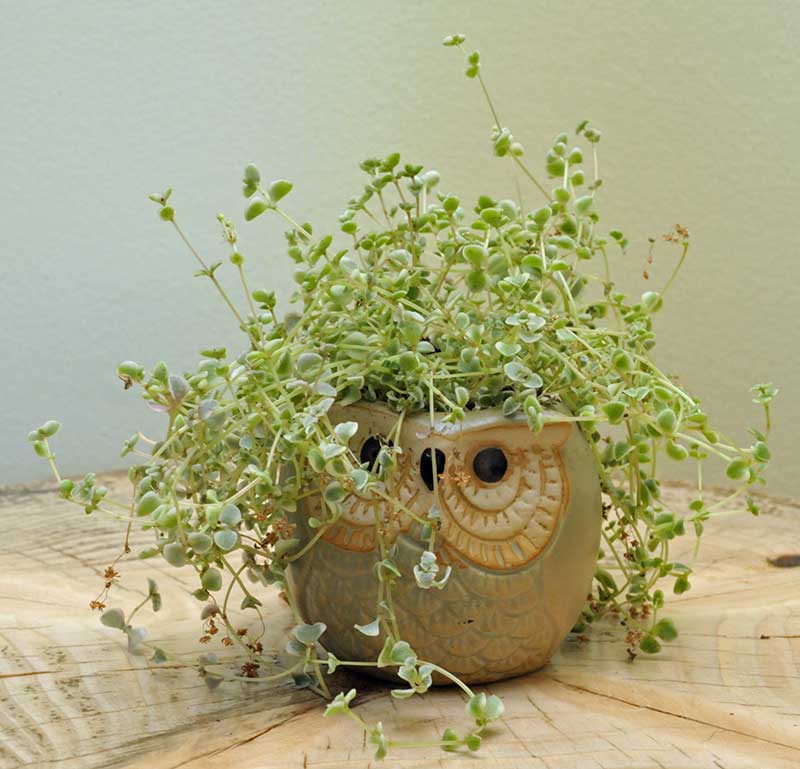

|
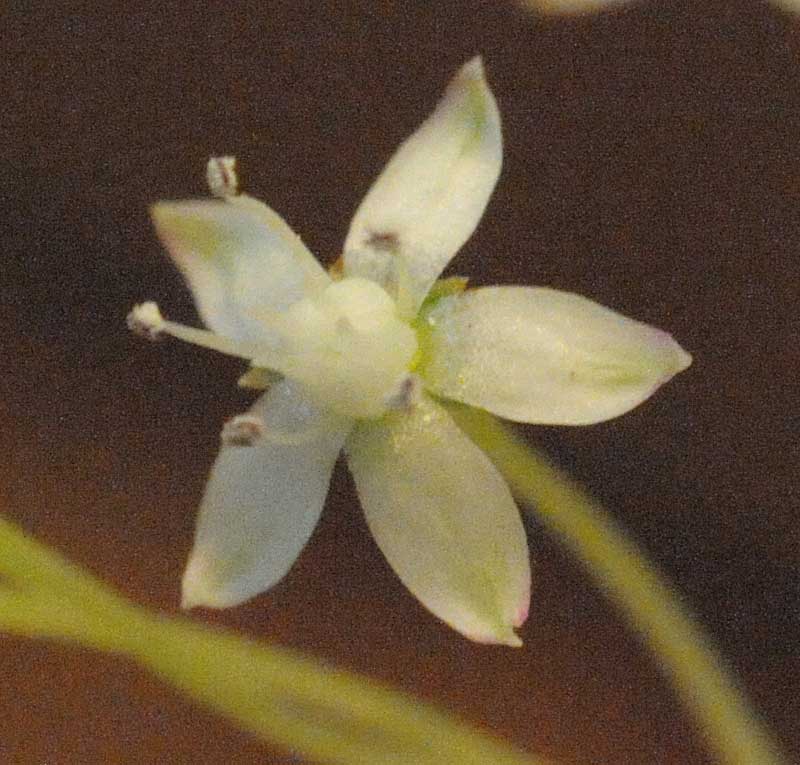

| |
| Sedum morganianum is from Mexico. |


| ||
| Sedum sexangulare is from Europe & Asia and is hardy outdoors in Ottawa. |
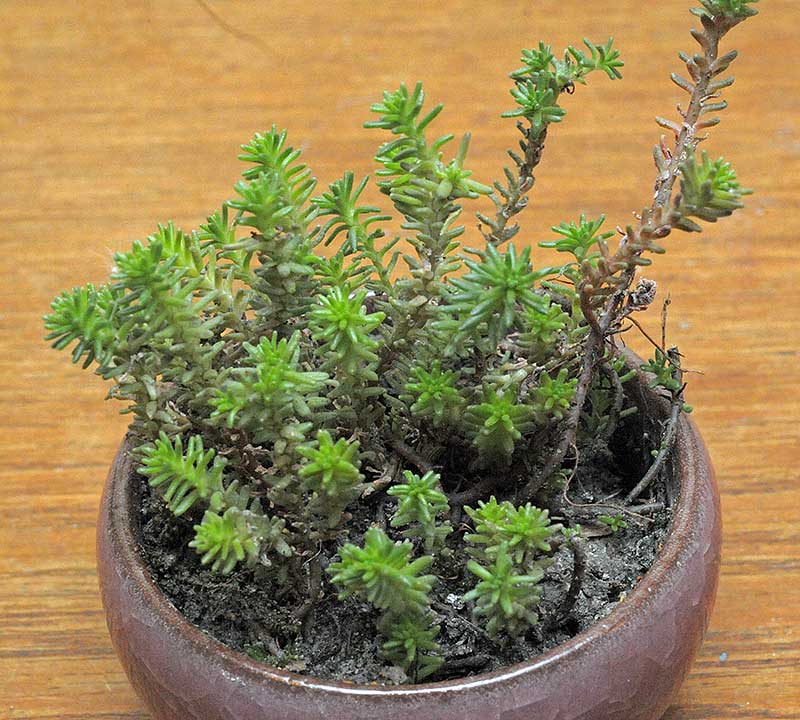

|
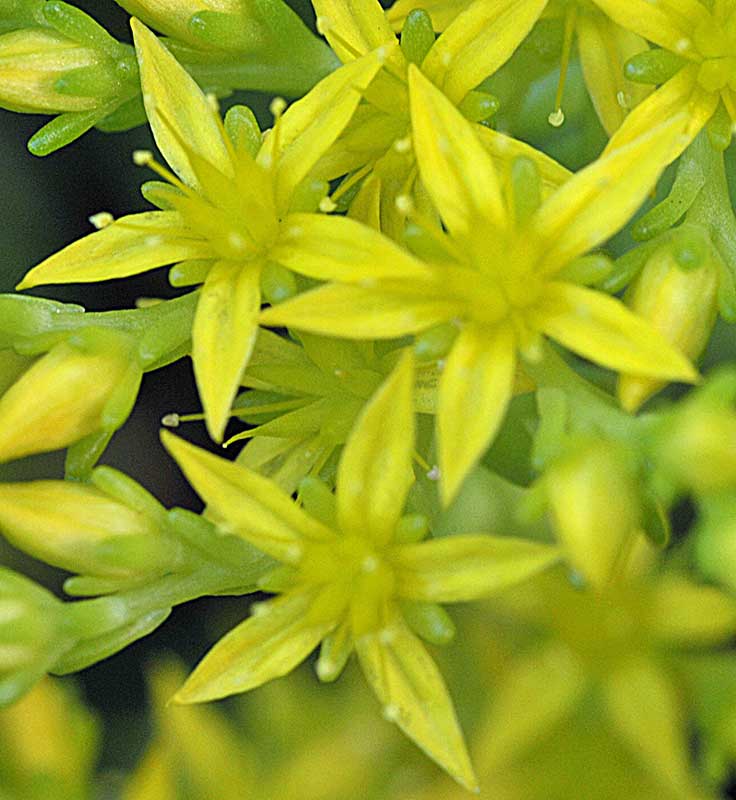

| |
| Sedum spurium is from the Caucasus and is hardy outdoors in Ottawa; this is a selected red form. |
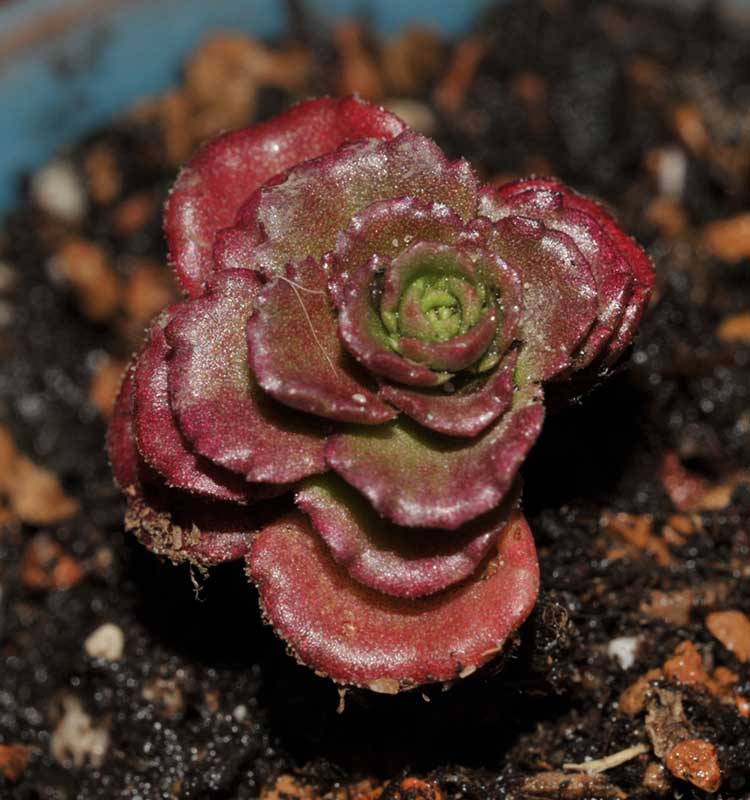

| ||
| Sempervivum arachnoideum forms a 'spider web' at its center. |


| ||
| Sempervivum 'Commander Hay' develops strong red and green patterns with age. |
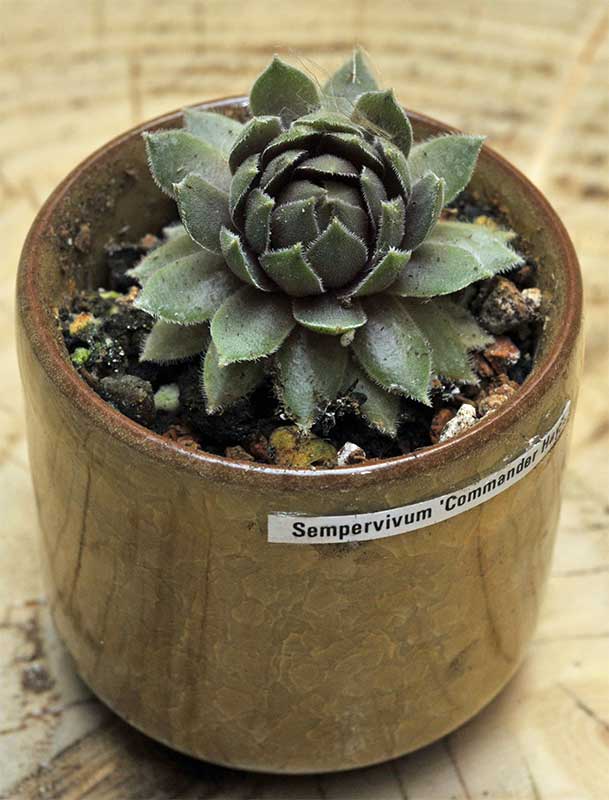

| ||
| Sempervivum 'Gold Nugget' is sold as being a brilliant gold with equally brilliant red tips. However, this is how it actually looks most of the year! |
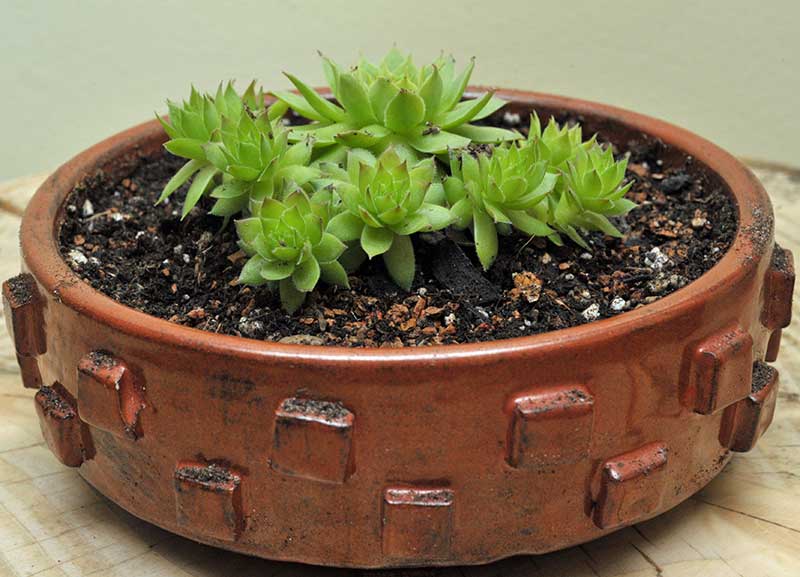

| ||
| Senecio articulatus is native to South Africa. This is the beginning of a bonsai-inspired forest. |
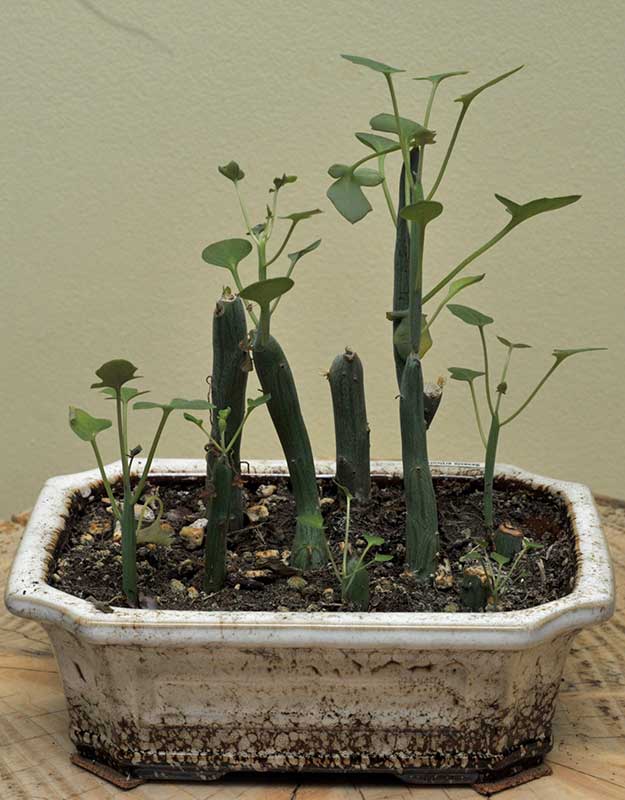

|
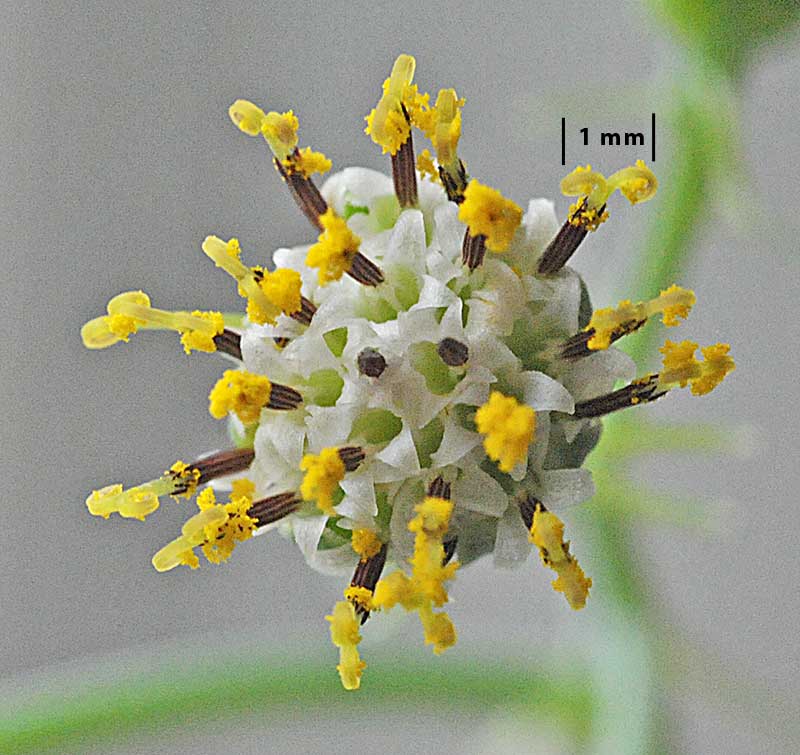

| |
| Senecio herreianus from southwest Africa forms long strings of succulent leaves. |


| ||
| Senecio pendulus is a succulent native to mountains of north-east Africa, often called "inchworm" from its growth habit. Its classification has bounced around among several genera. |
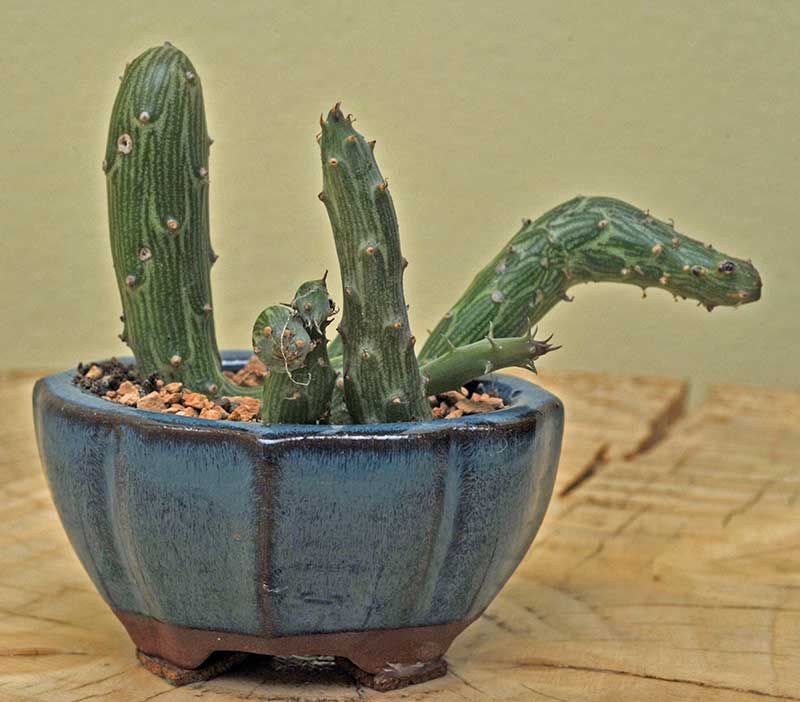

| ||
| Senecio rowleyanus, often called 'string of pearls', is also from southwest Africa and also forms long strings of succulent leaves. |
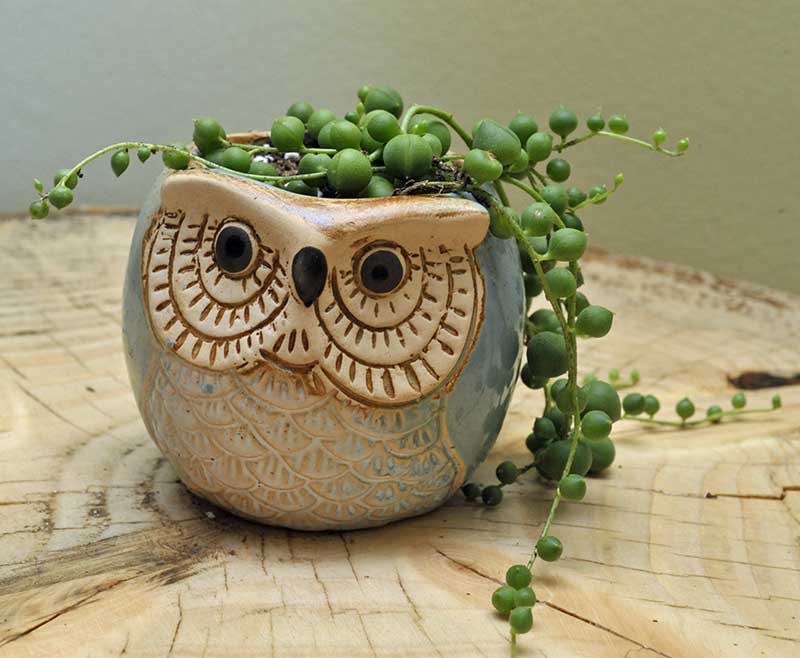

| ||
| Stenocereus pruinosus is abundant in Mexico where it's cultivated for its fruit. When full size it's a tree-like columnar cactus up to 7 m tall with many stems rising from the base. |
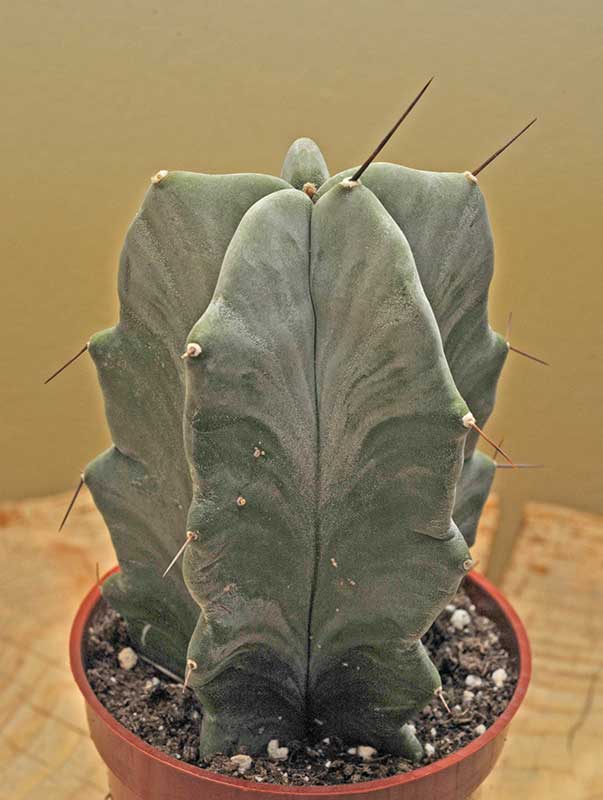

| ||
| Tephrocactus papyracanthus is from western Argentina, the paper 'spines' are unique. |
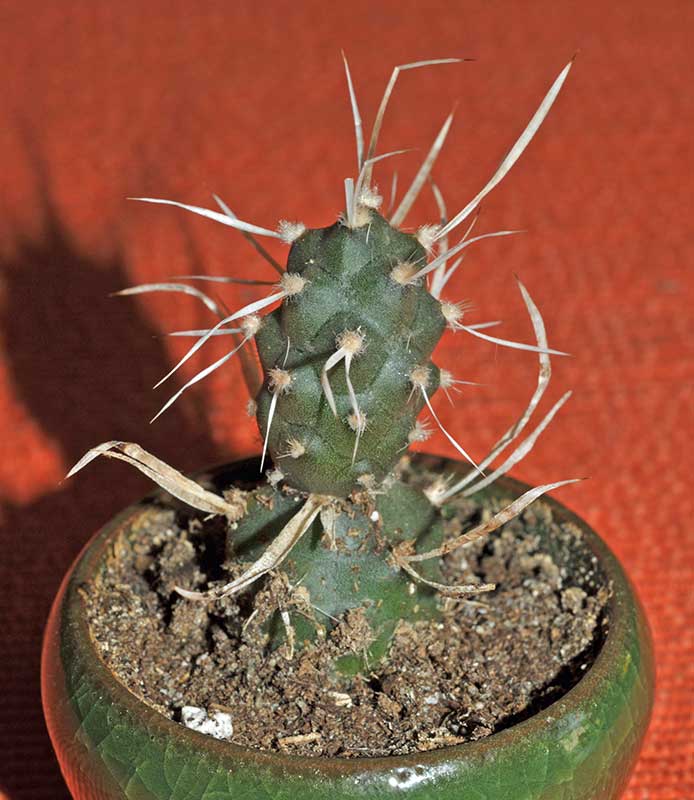

| ||
| Tephrocactus weberi is from Argentina; its 7 cm spines are spectacular. |
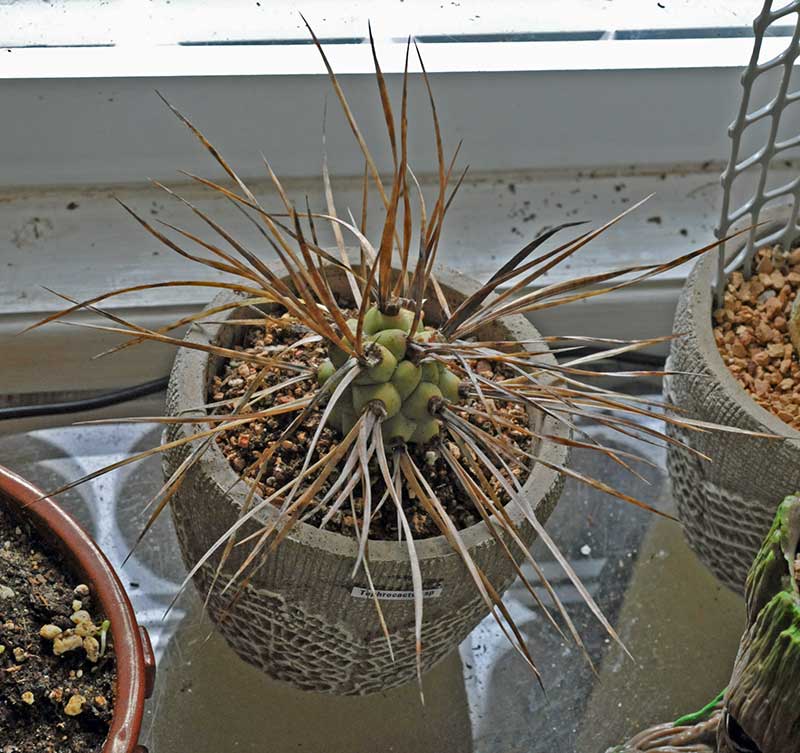

| ||
| Titanopsis calcarea is from South Africa. |


| ||
| Tradescantia pallida is native to northern Mexico and grown widely for its striking purple foliage. This one has more green than purple. |
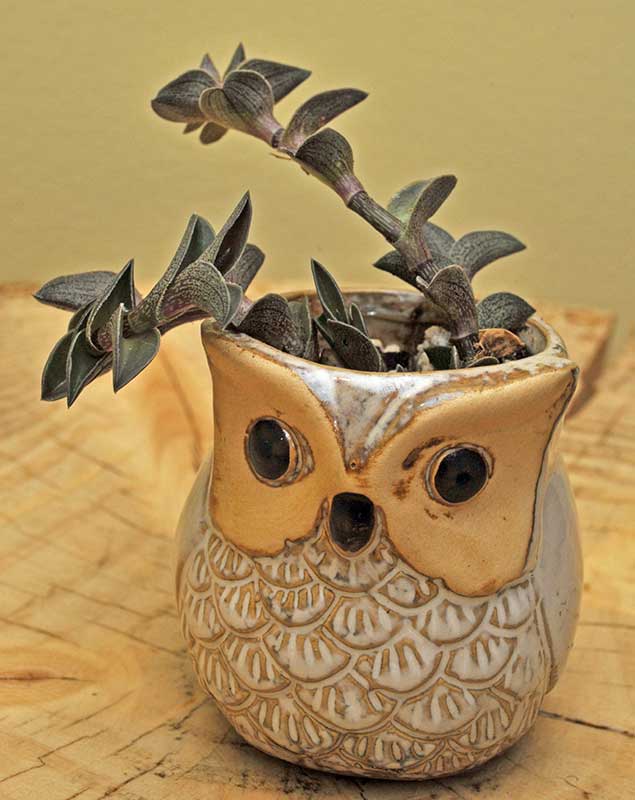

|
To meet Ottawa area cactus & succulent lovers, Google the Ottawa and Area Cactus & Succulent Group or join us on Facebook.